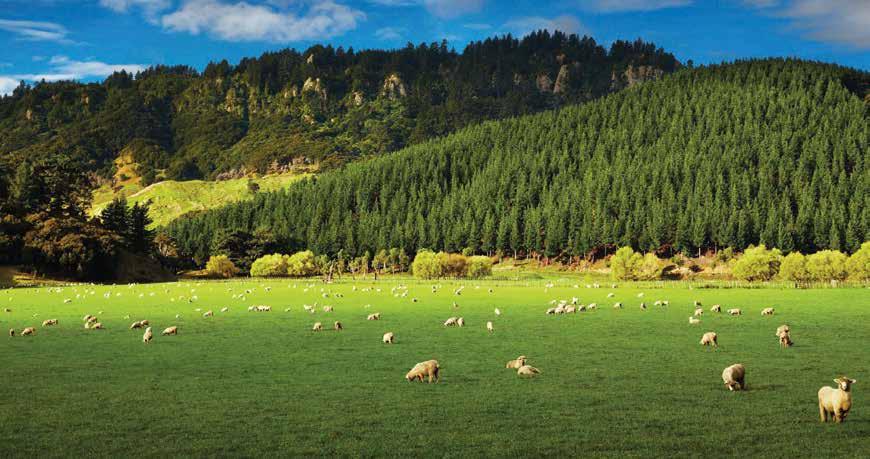SPRING 2023
Hive mind

How a daughter's idea started a creamery
gap




Minimum spend $2000.

Purchase today through your Farmlands store or TFO.




SPRING 2023
Hive mind

How a daughter's idea started a creamery
gap




Minimum spend $2000.

Purchase today through your Farmlands store or TFO.




Megan has had a long association with Calcimate® during her 10 years of sharemilking on the current farm, and other properties on which she's worked previously.
The need to use Calcimate® is clear to Megan, and when asked if staff are on board too, she explained “staff understand the importance of using Calcimate® - and why we use it.”

“Staff understand the importance of using Calcimate® - and why we use it.”
ME GAN THOMSO N WAIKATO DAIRY FARME RMegan Thomson sharemilks 350 cows on a 120ha effective family farm in the lush farmland on the outskirts of Matamata.
FARMLANDS PUBLICATION TEAM
Deborah Allan
Ian Turner
CONTACT
Farmlands
535 Wairakei Road, Burnside, Christchurch
Ph: 0800 200 600
Email: farmlander@farmlands.co.nz
CONTENT & DESIGN BY SCG
David Nothling-Demmer
Niko Kloeten
LauraGrace McFarland
Julian Pettitt
Ayla Miller
PRINTED BY: Webstar ON THE COVER
Jess Hill of Dreamview Creamery on her family’s dairy farm.
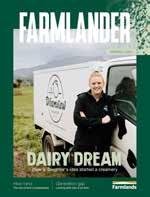
This may be an unsurprising opener for a magazine devoted to the work and prosperity of farmers and growers nationwide, but this month we’re looking at how things are on the improve post-Cyclone Gabrielle and where shareholders and customers are making gains across the primary sector.
This publication is printed on paper made from pulp that is environmentally certified, and from renewable and sustainable sources using vegetable-based inks. It is Elemental Chlorine Free (ECF) and manufactured under strict ISO 14001 Environmental Management Systems (EMS). The plastic wrap is 100% recyclable in the New Zealand soft plastic recycling scheme.
This publication has been printed by Webstar, a Toitū enviromark diamond certified company and a winner of a Green Ribbon Award “Minimising our Waste”.
The information contained in this publication is given in good faith and has been derived from sources perceived to be reliable and accurate. Whilst every effort is made to ensure the accuracy and correctness of the information, Farmlands gives no warranties, express or implied, regarding the information nor does it accept any liability for any opinion or information (including the accuracy or completeness thereof) or for any consequences flowing from its use. The information and views expressed in this publication are not necessarily the views or opinion of Farmlands, its editorial contributors, freelancers, associates or information providers. Independent advice is recommended before acting on information or suggestions contained herein. Readers who rely on this information do so at their own risk. Reference to any specific commercial product, process, or service whether by trade name, trademark, manufacture, or otherwise does not constitute an endorsement or recommendation by Farmlands. No part of this publication may be reproduced in any form without the prior written permission of the publisher.
Prices and offers apply only in the time-period stated on the front cover of this publication and while stocks last. Not all products are available at all Farmlands stores. All prices include GST unless otherwise stated.
We’re privileged to hear from Jacqueline Rowarth – Past President of the New Zealand Institute of Agricultural and Horticultural Science, who’ll take us through rural-sector priorities post-election. We also look at some fast-growing opportunities in fruit and there’s a great read coming out of Raglan too, about a dairy-farming couple and their daughter’s lightbulb moment to start a creamery.


Top of the core farming-growing agenda is a deep dive into spring nutrition and agronomy, as Farmlands’ hugely talented team put pen to paper to talk about everything from spring flea treatments, to the principles of pasture management. There’s also a little pearler of a recipe from Annabelle White, who absolutely knows what to do when life gives you lemons.
As always it’s a diverse read, perfect for wherever you are on your rural journey. So take your time, soak up every word and know that rain or shine, we’re out here too.
Got something to share with the team at Farmlander ?
Email farmlander@farmlands.co.nz
Keep up-to-date with the latest news from across the co-operative via our website and social media. @farmlandsnz @farmlandsnz
Farmlands Co-operative Society Limited

As the weather improves, I hope you find a sunny spot to enjoy this latest Farmlander magazine. I wanted to update you on Cyclone Gabrielle as we shift from the immediate impact, to how the sector is rallying to build back better than before. I also want to share our plans for our 2024 financial year.
We’ve been running our ‘Post Your Support’ campaign for several months, in partnership with Federated Farmers and Stuff. As New Zealand’s largest rural buying co-operative, we had the buying power and supplier relationships to make a real difference in this specific area. Our efforts were focused on raising funds to repair and rebuild thousands of kilometres of lost fencing and growing structures.
We initially had more requests for support than the money we were able to raise, but we kept working for our customers. In June, we were able to secure $1 million in extra funding, taking the total raised and granted to $2.1m. This was thanks to the Farmers Adverse Events Trust and the Ministry of Primary Industries. The additional funding allowed us to help more farmers and growers and extend funding support to those in Northland and on Waiheke Island.
This was hugely satisfying, because we know that the sooner fencing is sorted, the sooner agriculture and horticulture businesses can rebuild, and rural communities can start returning to a sense of normality.
We’re now well into the new financial year, in a time that remains incredibly challenging for our sector. Like our farmers and growers, we’re focused on the fundamentals that have driven our success over a long time – delivering the best value possible to our customers and doing so incredibly efficiently. We also need to keep one eye on the future and continue making good investments that set us up the right way for when times improve.

One area we’re really focused on is growing in animal nutrition, which is our largest product category and a critical input for most of our farmers. We’re supporting on-farm animal health and driving productivity, whether through
high-end custom-blended pelletised feed, custom blends, straight bulk supplement feed or bagged product, through our NRM, McMillian and Reliance feed brands. These are your brands and your manufacturing assets; by supporting these products you help lower the cost for all shareholders.
We can strengthen our co-op and support on-farm profitability through greater ownership and influence of the animal nutrition value chain. We have researched several successful companies that are market leaders in producing, selling and distributing feeds and supplements. What these companies have in common is they own either all, or a large share, of the supply chain. Having control over every stage of production means that top quality is maintained throughout, which places them in the best position to support their customers towards their end goal: producing the very best food and fibre products. We are working to develop further our specialist expertise in the category, and we’re looking at every opportunity to better manage the supply chain so that we’re delivering the best possible quality and value to our customers and shareholders.
In July, we celebrated our birthday and the fact that we’ve been riding alongside Kiwi farmers for over 60 years. We hope the 12 winners of our UBCO 2x2 electric motorbikes are enjoying them. We’re going to be here for the next 60 years, responding to all of the changing needs of our customers.
Nga - mihi nui Farmlands CEOFern is 50% owned by you, Farmlands shareholders. This means your fuel purchases strengthen Farmlands and help it to better back Kiwi farmers and growers.
With Fern, Farmlands and Northfuels/Southfuels joined forces to form one of the largest New Zealand rural sector fuel providers, focused on meeting all your fuel needs.

Switching to Fern is easy and means you can pay through your Farmlands account. Plus, you’re giving back to your local community with every purchase.
For every 1,000L of bulk fuel you have delivered your school receives $50!



Learn how a Kiwi app is making life easier for beekeepers, during a challenging time for the industry.
Dr Rob Derrick looks at backyard chicken rearing.

How a Southland dairy farmer is using her recruitment experience to help other farmers manage the people side of the business.
We examine how Farmlands-owned nutrition brand NRM has been supporting the successful Canterbury-based Nevele R Stud.
Dr Rob Derrick examines how bad weather can affect cows’ feed requirements.
16
Two of New Zealand’s fastest-growing fruit exports this century, avocados and cherries, are experiencing contrasting fortunes.
Meet a Raglan dairy farming family who started a creamery business in a shipping container, following their daughter’s “lightbulb moment”.
We visit a lifestyle block breeding Valais Blacknose sheep, a Swiss export known for extreme cuteness.
‘The cuddly cook’ Annabelle White shares her words of wisdom in the kitchen, and an easy lemon chicken recipe.
We look at how farmers and growers can use the rebuild from Cyclone Gabrielle to boost resilience and productivity.

Award-winning dog trainer Lloyd Smith reflects on his career, and offers sage advice on training your dog.
We profile three must-have tech apps from Gallagher, Southern Cross and FarmIQ.
New Rural Support Trust CEO Maria Shanks outlines the biggest issues worrying farmers and growers.
Leading academic Dr Jacqueline Rowarth shares her thoughts on how the next government can bring hope back to farmers.


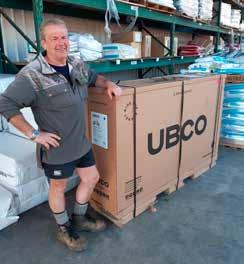
This year, we’re celebrating 60+ years of being ‘out here too’. To mark the occasion, each week in July we gave away three UBCO 2x2 electric motorbikes to three lucky shareholders who either purchased in-store, online or at a Farmlands Card Partner. Congratulations to all our winners, including: Adam Williamson, Michael and Nicolette Holden and Philip Jefferson.
For many in the dairy industry, 1 June means just one thing – time to move. As the new season starts, thousands of sharemilkers pack cows into stock trucks and move equipment and families to new farms. It’s a familiar sight around the country, but it’s an event that requires juggling many unforeseen changes including updating power, telephone and internet connections, and information for insurance. We can’t take care of all the details for our customers, but anyone who purchased any acid, alkali or teat care product from Farmlands during our midyear campaign was entered automatically in a draw to win a $5,000 ‘shed chem’ credit, or a $5,000 Smiths City voucher. The lucky winners were Alan and Sharon from Matamata, who took home a $5,000 Smiths City voucher –congratulations and we hope all the moves go as smoothly as possible!

Voting for the 2023 Farmlands Director Elections closed on 2 August. Rob Hewett and Will Clarke were elected to the two available shareholder representative positions on the Board.
Rob and Will were chosen by shareholders from a pool of seven candidates. The Farmlands Board noted the high overall calibre and commitment to the agri-sector displayed by all the candidates.

As a passionate, dairy and beef farmer from Clinton in South Otago, Will says he’s really looking forward to helping shape a strong and profitable Farmlands. “It has been - and will continue to be - an essential part of the success of farmers and growers like me.”


Rob thanks his fellow shareholders and Board members for placing their trust in him to continue being part of the Farmlands governance team.
To see the full results, visit: https://www.farmlands.co.nz/ directorselections2023.html

EVENTS WRAP






®The largest agricultural event in the Southern Hemisphere wrapped for its 55th year in June, bringing together individuals, business leaders and decision-makers from across the globe. The first National Fieldays since international borders re-opened, it once again provided the ultimate platform to showcase New Zealand's agricultural excellence and serve as compelling testimony to the unwavering resolve and determination of the agricultural community.
This year Farmlands had a new-look site, with a key focus on showcasing the knowledge and advice the co-op is renowned for across the rural sector. The Farmlands agronomy, nutrition and horticulture teams were on hand to provide plenty of advice, and the Careers Team spoke to those interested in working in the rural sector and told them about life at Farmlands.


4 x 4.5m open-front bays 18.0m long, 8m deep + 900mm extended front included
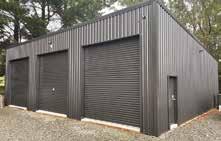
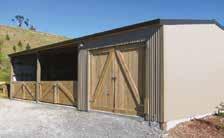
- 4.0m high lean-to Rafters upsized – no diagonal props

EXCLUSIVE SHAREHOLDER PRICING

$15,291 +GST*
Extra girts – min 5 rows of girts in back wall to keep walls stronger for longer Barge flashing included Zinc, for coloursteel - add $2,471+GST

Very high wind – add $1,451+GST
* After shareholder rebate applied. High wind, 0.9kpa snow (or 0.0kpa if applies), Good Ground assumed. Kitset materials and council ready plans included. Concrete, council fees and assembly not included. Extra freight may apply for remote locations. GreenWood T&Cs apply. Photo illustration only. Hundreds of other specifications and dimensions are available.

Farmlands Chief Sales Officer Blair Robinson has bolstered his leadership team with three experienced new additions.
Harriet Bell, who has 12 years experience across Farmlands, has been appointed Head of Key Accounts & Sales Experience. Harriet brings a wealth of industry knowledge and previous experience to the new role and an insider’s perspective gained from being a farmer herself. She aims to build closer relationships with our key Account customers as well as continue to improve planning processes and tools for Farmlands’ sales teams. “As a thirdgeneration Farmlands shareholder, I am very passionate about the co-operative and the role we play in supporting New Zealand food and fibre producers” says Harriet. In addition to her new job at Farmlands, Harriet, a 2018 Kellogg Scholar graduate, created ‘Hemprino’ in collaboration with Farmlands shareholders Siobhan O’Malley and Paul Ensor, which is a unique new hemp and merino wool all-natural fashion clothing brand.

Working closely alongside Carmen will be Dr Elena Duter, who also joined Farmlands in July as Head of Agronomy –Technical Field Growth. She will be focused on giving expert advice to shareholders and overseeing the technical growth of our Agronomy team. Elena comes to Farmlands with a wealth of experience in the sector as a globally-recognised technical expert in farm systems, seed technology and primary sector in general with a PhD in plant protection from Lincoln University. She has consulted for the UN in Pakistan in the seed sector, and participated in agriculture development work in many South American countries and more recently in the Pacific Islands, including Fiji, Samoa, Vanuatu, and the Cook Islands. Prior to joining Farmlands, Elena led the International Engagement Development work for New Zealand Apples and Pears Inc., re-engaging with key export markets like Japan, UK and India.


Check out more deals to help your Lifestyle Block thrive this Spring


Carmen White started as Head of Field Sales in July, and comes from a line of original Farmlands shareholders, so she combines a passion for the co-op with a strong history of sales success. She has an extensive background in sales, marketing and product development in a variety of industries both here and overseas, across the building and construction, travel, transport and logistics industries. Carmen also has experience within co-operatives and she’s worked alongside Farmlands in business partnerships in the past.


Congratulations Lyn Shaw – winner of our Winter Warmers competition in the Winter issue of Farmlander










From inspirational tales of sustainability to rapidly-growing industries and market outlooks – this section showcases shareholders’ stories and beyond.
16 We profile the cherry and avocado industries and look at their challenges and opportunities.

20 The Hill family share their story about starting a creamery at their Raglan dairy farm.
48 How the devastation of Cyclone Gabrielle has given some growers a chance to start afresh with new ideas and technology.

Cherries and avocados were among New Zealand’s fastestgrowing horticulture exports since 2000, but they have had contrasting fortunes in the past couple of years. We look at the state of the market for each fruit, and what lies ahead.
WORDS BY NIKO KLOETEN REMARK IMAGERY AND DAWN DUTTONNew Zealand horticulture has experienced a golden era this millennium, with exports nearly quadrupling from $1.7 billion in 2000 to $6.7 billion in 2021, according to the most recent Fresh Facts report funded by Plant & Food Research and Horticulture New Zealand. Growing Together 20235 – The Aotearoa Horticulture Action Plan, an industry document released this year, plans to grow horticulture exports to $12 billion by 2035.
While the bulk of the industry’s recent export growth was driven by the ‘big three’ of kiwifruit, wine and apples, some other stand-out horticulture exports emerged during this period. Avocado exports saw impressive growth, rocketing up by 700 percent from $25.2 million in 2000 to $201.6 million in 2021, while cherry exports increased over the same period by 890 percent ($5.6 million to $55.4 million).
Farmlands Head of Sales and Strategy – Horticulture, Chris Binns, says there were several factors behind the recent rapid increases in exports for these emerging fruits, including economic and technological. “Over that period globally we have seen the growth of the middle class in developing nations, which has driven demand for these products. There has also been
an increased awareness of the health benefits of foods like avocados.”
Some fruit exports have also benefitted from improved cool chain processes that allow them to be stored for longer after picking, opening them up to more potential markets farther afield, Chris says. However, he notes that the past couple of years have been much more challenging for growers across the horticulture sector.
“First you had the Covid travel restrictions, which led to labour shortages across the industry,” Chris says. “Then over the past couple of years you have had rising input costs, while growers in many areas of the country have been dealing with severe weather events that have damaged fruit and, in some cases, ruined whole crops. There are also some export products that are experiencing an oversupply, following rapid increases in production both here and overseas.”
While other parts of the horticulture sector have hit hard times, cherry growers have bounced back quickly from the Covid years. Cherry exports rose by an impressive 40 percent in 2022 to $78 million and are tipped to double within the next two to three years.
Reece van der Velden, General Manager of New Zealand Cherry Corp based in Cromwell, says exporting is the way to go for cherry growers. “We can’t keep up with demand, which is why we have recently expanded our orchard to two-and-a-half times its original size.
“The timing of our crop is around Chinese New Year. The New Zealand domestic market gets flooded every year with volume, so you really have to focus on quality and export.”
Reece is the second generation of his family to run the business, a joint venture that has 105ha of plantings. “For a while we had the largest netted orchard in New Zealand,” he says. “We ended up moving away from the first model which was close-quarter planting, and we went for big spaces, 5m by 3m. This set the new industry standard for how to plant cherries. We got told when we did it that we were mad, but we did it anyway, because you can’t just plant purely for volume, you need big fruit.”
Cherry exports have benefitted from improved cool chain and transport management as well as advances in technology, which have allowed for better monitoring of the fruit, giving live updates on location, humidity and temperature while in transit to the customer. “We even have a light meter that can see if someone’s opened a door or not.”

Farmlands TFO Bevan Meiklejohn says unlike certain other fruit, cherries require specific conditions that are only available in a few parts of the country. “Central Otago is where it’s at - 90 percent of export cherries are out of there, but there are also a handful of growers in Hawke’s Bay and Marlborough, who mainly grow for the domestic market. Funnily enough, there’s a cherry orchard right next to Farmlands in Blenheim.”
Bevan says Central Otago lends itself to cherry growing, as it is dry and hot in the summer and has cold and reasonably dry winters. “They need about 800 hours of that winter chilling, we get 1,100. You can get a wee bit of that in Hawke’s Bay but you need to put products on to mimic winter chilling. You get good winter chilling, good sunlight once you get the leaf on in summertime, but you do have issues with frosts, that’s why they invest heavily in frost protection.”
Bevan says one of the big changes in the industry has been in pruning methods, with many growers switching from the Central Leader method to Upright Fruiting (UFO) systems that cost significantly less to manage. “They don’t need to be elevated as high and you don’t need as skilled labour; you can get them trained within a week,” he says. “Central leader is the traditional Christmas tree shape and needs more skill and expertise. A season to get it right.”
One of the challenges for cherry growers is the specialist packhouse equipment required, due to the small size of the fruit. As an example, New Zealand Cherry Corp partnered with Tomra Investing in a multi-million-

dollar optical fruit sorter. “If you’re just a hobby farmer who has 4-5ha, relying on it being managed and packed by a third party, you will find it difficult,” Reece says.
He also says cherry growers need to understand the reason they’re doing it. “We are focused mainly on the export market. Given the cost of labour input and regulation, it doesn’t make sense to cater to the domestic market only. If the focus is only on volume, orchards will only grow small fruit. Small fruit has lower returns, making it less viable to export due to airfreight costs. Growers need to be selective on planting varieties that grow big fruit, not just ones that crop well.”
The outlook is vastly different for avocado growers. After years of rapid growth, avocado exports suffered a severe 60 percent drop in 2022 to just under $80 million. Parts of New Zealand have seen significant new plantings of avocados in recent years, particularly Northland where several large corporates have joined the fray.
This has led to significant increases in the industry’s production capacity. A report last year by Rabobank said New Zealand’s avocado production was forecast to grow by an average six per cent annually over the next five years,

reaching 57,000 tonnes by 2026 — up from 44,000 tonnes in 2021.
But second-generation Northland avocado growers Garry and Charlene Cliff say the local avocado industry is already in crisis. Five years ago, they were getting between $26 and $39 dollars per tray for exports and $15-$20 per tray on the local market. This has now dropped to $12-$15 dollars per tray for exports and $4-$9 per tray for the local market. With costs rising for inputs like fuel, along with increased regulatory costs, many growers are struggling to break even.
“At the moment there’s a global over-supply of avocados, and the crap weather we’ve been having has affected quality,” Garry says. “We’re already seeing guys flattening blocks of avocados, and the other thing the weather has done is some of those marginal blocks are actually dying out because of the wet soils. We went to the World Avocado Congress (held in Auckland in April), they had some analysts there and they’re talking about 2028 before supply and demand line up again.”
Charlene says avocado growers have already had three tough years. “When we had Covid, that was hard, the following year was hard with the labour and shipping and actually getting people in to do the work.
Zealand’s avocado exports have gone to Australia, but that is about to change.
“As Australia’s production has come online more, we’ve kind of got pushed out of there. The focus has gone on the Asian markets like Hong Kong, Taiwan, Indonesia and Thailand. The Pacific rim is our focus, that’s really as far as we can go shippingwise to get reasonable avocados there. That’s our limiting factor.”
Farmlands TFO Philip Elliot says avocados need good volcanic soil that is well-drained, as well as a decent amount of sunshine and warmth. “Obviously you won’t be growing them down in the South Island very well, but they go well in places like the Bay of Plenty and Hawke’s Bay, Dargaville where there’s some new development going in, and the far North.”
Philip says one of the features of growing avocados is the low cost to get started, with few barriers to entry, meaning people can dabble in them if they have suitable land. “Like anything you get that economy of scale - the bigger you are the more effective it is, up to a point. However, there are no licensing fees, so you’re looking at the cost of trees, irrigation, things like that, so it’s not a high-cost industry to get into.”
Hass avocados, which change colour when they are ripe, are likely to continue to dominate the market
PHILIP ELLIOT TECHNICAL FIELD OFFICERterms of their oil content, thanks to our climate. “My parents have had avocados since the late 1970s. When I went to school people didn’t even know what an avocado was.”
While the economic outlook depends on what type of fruit or vegetable you are growing, recent progress on free trade is encouraging news for the sector. In May the government announced a Free Trade Agreement with the United Kingdom that will eventually eliminate all tariffs on New Zealand goods to Britain, while in July a similar deal was signed with the EU (subject to approval by the European Parliament).
The deals offer significant upside for New Zealand growers, with continental Europe already our biggest market for horticulture exports ($1.2 billion in 2021) and the UK the sixth biggest ($514 million). Farmlands Head of Sales and Strategy – Horticulture, Chris Binns, says the free trade deals are “not a home run by any stretch”, but certainly a positive lift that the industry needed.
We’ve had the cyclone, that’s just topped things off for most people, not only financially but the mental wellbeing side of it as well. It’s hard and it does affect a lot of people.”
One of the big trends in New Zealand’s avocado exports is the switch away from what has been our main market, Australia. Figures from industry group New Zealand Avocado show exports to Asia tripled in 2021/2022 compared to the previous year. Garry says that traditionally most of New
globally, Philip says. “The only real advances on the technical side of things in the last 10 years would be clonals (cloned plants), but they come with their own issues. When you clone them, they have shallow roots, so in the latest storm when everyone’s trees fell over it was basically the clonals.”
One of the major reasons for global growth in demand for avocados is their health benefits. Garry says New Zealand avocados score well not only on blind taste tests, but in
“The new free trade deal with the UK offers a shining light for our fruit and vegetable industries. Any deal that has the potential to lift a market’s size or increase a grower’s return is obviously beneficial. If we can further spread our exports across multiple countries, hopefully that will lead to better economic returns across all markets, with less risk of oversupply.”
Chris says that while some parts of the sector are going through a challenging period, the long-term outlook for New Zealand horticulture is still bright. “The golden era is not over; it’s just hit a speed bump.”

“If we can further spread our exports across multiple countries, hopefully that will lead to better economic returns across all markets, with less risk of oversupply.”
While her friends and siblings are heading away on their overseas experiences, Jess Hill of Dreamview Creamery is happy to stay put at her family’s Raglan dairy farm. The 26-year-old works on a 12-on, two-off roster; rising before dawn to join her mother Bronwyn and their team bottling their own pasteurised A2 milk, yoghurt and cream. The products are loaded into six delivery trucks, destined for Waikato homes and beyond.
Her parents David and Bronwyn Hill first came to Raglan 25 years ago. Before the move, the couple had careers outside of farming; David was a builder and Bronwyn a lab technician. “We bought a 10 acre block just north of Hamilton in the late 1980s,” Bronwyn says. “I would rear calves as well as do my day job at the lab. After 30 years as a builder, David decided he was keen to have a career change and looked into dairy farming. He went for a drive around our area and got a job as a farm assistant. I would also help out as a relief milker and did calf rearing for them.”
The following six years saw the couple progress in the dairy industry; contract milking for three years and then sharemilking for another three. They had been on the lookout for their own dairy farm and they sold their 10 acre block, which gave them enough capital to buy the cows from their sharemilker and put a deposit on a farm. “The land agent said to David about a farm for sale in Raglan, but didn’t think we would be all that keen as it was steep and quite run down, but David came out, had a look and just fell in love with it.”
Overlooking the Raglan coastline, what is now known as Dreamview Creamery is 118ha and is currently split calving 160 cows on a 20-a-side herringbone platform. Dairying is busy at the best of times and the couple also added three
young children to the mix in quick succession. Jess came first in 1996 and twins Katherine and Matthew followed in 1998. To make ends meet, Bronwyn also worked off-farm at the local vet clinic and reared calves each season. “We chipped away like that for the good part of 20 years and then along came Jess and her bottled milk idea!”
Jess says it was while studying a Bachelor of Agriculture at Lincoln University that she had a lightbulb moment to start a creamery. “I was working for a company down south and every Saturday I would help sell their milk at the Lyttleton farmer’s market. It was selling really well, and I could see the concept would go well back home in Raglan.”
Minimising plastic waste was becoming increasingly important to consumers and Jess says Raglan was an area that seemed to be leading the charge in this respect. Bronwyn says, laughing, “She called us up and said, ‘we need to bottle our own milk!’ David and I went down to Christchurch and looked at what Jess was proposing. David didn’t take too much convincing, I was a little less enthusiastic.”
Jess completed her degree and came straight home to commence the set-up of the creamery. Jess says these days most cows produce A1 beta-caseins. “When the A1 protein is broken down in the gut, it uses a different amino acid to that of A2. That’s believed to be the main difference and thus research has shown health benefits with A2 protein compared to A1 and why lots of consumers find A2 milk easier to digest.”
Through DNA testing they identified which of their cows produced only A2 beta-caseins and have kept to this regime as they have increased their herd supplying under the creamery’s brand.
A dairy farming couple in Raglan saw their business transformed when their daughter had a “lightbulb” moment: why not start a creamery?

Starting out in a re-purposed shipping container, the family would bottle fresh raw milk in 1 litre glass bottles and sell direct to Raglan homes via their two delivery trucks.
Adding a pasteurised option increased both home delivery demand as well as the opportunities for more retail suppliers and food establishments.
The team was working at capacity in the cramped shipping container, so in 2021 they invested in a new purpose-built creamery and bottling facility.
For David and Bronwyn, this has been a special period in the timespan of the business; daughter Katherine had also returned home from university and taken on the farm manager role and Matthew had completed his engineering
Left: Starting a creamery was a “lightbulb moment” for Jess. Facing page: Dreamview Creamery has diversified into other products like yoghurt.
qualification; one of his first jobs was working for the company that built the new creamery. “It was really cool to have all three of our adult kids working at home and doing what they love,” Bronwyn says.
Matthew is now working as an engineer in London and Katherine has also recently headed off to the UK for her own OE. Older sister Jess is content with staying home. She sees Dreamview Creamery as her baby and wants to see it thrive.
The paperwork associated with manufacturing pasteurised milk is intense and Bronwyn says Jess took on that huge challenge on and won. “It was a no-brainer that we needed to go pasteurised, so I just had to work through the process, really,” Jess says.

The concept of glass-bottled milk was embraced by their Raglan community and during Covid lockdowns their weekly orders increased by 1,000 litres. However, a premium product such as theirs is influenced by the status of the economy and they have noticed a minor downturn in recent times as high inflation affects households.
With the investment into their creamery, the family has had to pivot in order to ensure the business remains viable despite the economic uncertainties. They have diversified their products to include bottled cream and jars of plain and flavoured yoghurt, and every so often they also collaborate with Raglan Chocolate, releasing a limited supply of chocolate milk which always sells out quickly. Another local company they enjoy working alongside is Raglan Gelato, which is based on site in their old container. “We love to
support other local food manufacturers and see them grow alongside us,” Bronwyn says.
A sales and marketing person has also been employed. “Jess was spread very thin, processing orders, working in the shed, and then seeing through the deliveries; it was very hard to give the marketing side of things the time it needed in order to get new business, so we decided to employ someone to take on that role and it’s been the best move we have ever made,” Bronwyn said. Sales and marketing manager Mia Riley has taken the opportunity and run with it. “She’s just as passionate about our products as we are,” Jess says.
New stockists are coming on board every week and TV chef Ben Bayly of My Kitchen Rules fame has introduced
“It’s been a game-changer for us to have someone solely focused on our brand and sales so we can get on and do what we are good at. We thought we were going quite well when we did a Facebook post once a week.”
their products into the menus of his two restaurants in Auckland's CBD, Ahi and Origine.
Six delivery trucks run throughout the Waikato region, into the Bay of Plenty and most recently into Auckland. As well as households, their customers include cafes, motels and small retailers such as greengrocers and bulk food stores such as Binn Inn.
“It’s been a game-changer for us to have someone solely focused on our brand and sales so we can get on and do what we are good at. We thought we were going quite well when we did a Facebook post once a week,” Jess says, laughing.
There’s no denying the creamery business has added a new level of stress for Jess and her parents. Bronwyn says David saw the creamery as a fun distraction from the monotony of the traditional dairy farm model and a way for Jess to add value to their business when she returned home from university. Both Bronwyn and Jess credit the work ethic in each other and the enjoyment they have working alongside each other each day “and the rest of our staff. We all get on really well and we have a lot of laughs,” Bronwyn says. While initially employing mostly travellers, Covid put an end to that, and the company now has a staff of 17 Raglan locals working in part and full-time capacities.
While heavily involved in the creamery in the early years, David now enjoys spending a bit of time off-farm working as a loader for a topdresser fertiliser company. “He’s in his happy place travelling around the North Island and seeing some amazing countryside,” Bronwyn says.
Bronwyn also credits the strong connection the farm has with their Farmlands Technical Field Officer McKenzie Smith and the team at the Hamilton store. “Some of them have been around as long as we have and know our business well. We just call the store, and they will leave out whatever we need for one of our delivery drivers to pick up. They are very reliable like that. McKenzie is great with bulk order pricing too.”
In a job as relentless as theirs, it’s important to have a passion off-farm and Jess has found this through the set-up of a youth programme she does with others in the Raglan community. “It's all about offering things to do for our youth that bring them positive community connections. It’s very rewarding, we have a lot of fun,” she says.
Bronwyn is in awe of the passion and ethic Jess puts into everything she does. “Jess is the driving force behind everything we do in the creamery,” she says. “But Mum and Dad are the glue that holds us all together,” Jess counters.


Boonies, a New Zealand company specialising in premium outdoor footwear and gumboots, was born out of a desire to provide comfortable, durable and stylish gumboots and footwear. Glen and Julia Sheaff, the passionate founders of Boonies, were “tired of seeing people wearing uncomfortable and poorly-fitting gumboots.”
With over 10 years’ experience in retail, followed by setting up a wholesale company and then getting involved in the footwear market, Glen and Julia noticed a gap in the market for well-designed boots tailored specifically to rural New Zealand women. After experimenting with various designs, they took the leap and established their own brand, Boonies.
Glen and Julia launched their first Boonies range at the Fieldays® 11 years ago. To their delight, the initial range sold

out within a few days, and subsequent shipments flew off the shelves within weeks - reinforcing the demand for their range of more comfortable, stylish and durable footwear.
Motivated by customer feedback at local A&P shows and Field Days, Glen and Julia dedicated themselves to expanding the Boonies range to cater to both men and women, while also broadening their lifestyle offerings. By the third year, they consistently sold out, prompting them to explore retail partnerships. Farmlands became their exclusive rural partner in 2015, opening doors to a wider customer base and expanding their market reach.
As a family-run company, Glen and Julia prioritise maintaining the quality and innovation of Boonies boots. Glen emphasises the importance of customer feedback, saying, "We take their feedback and introduce new innovative styles. For example, the ‘Kicker’ boot was named and conceptualised over the counter at Fieldays©, inspired by discussions about wool prices.” This also led to the creation of their “Comfy As” New Zealand wool slippers, demonstrating their commitment to meeting customer needs.
Today, Boonies offers a diverse range of over 20 styles and a wide array of accessories.

The animals Nikita looks after at her day job are much smaller, and arguably a lot creepier, than the ones on her farm. A qualified vet nurse, Nikita works in the zoology department at Otago University, where she manages the animal facility. “No sheep there!” she says. “At the moment we have lots of natives. We have native frogs and geckos and skinks, and then we’ve got lots of different insects like weta, cockroaches and crickets, zebrafish and eels.”
One of the new creatures in the facility is the xenopus, a frog from Africa, which is used for a lot of genetics research. “They’re really weird looking,” Nikita says. “I work in a room with hundreds of them for a few hours a day. I am not involved in the research, but some of the students have done limb regeneration work, work with epilepsy. They were the first amphibians to have their genome sequenced, so they are a model organism really.”
She comes home to some very different organisms: two horses, seventeen chickens and the star attractions of the 13-acre Woodland Farm: the Valais Blacknose, sometimes described as “the world’s cutest sheep”. However, the most
important organism in Nikita’s life is her husband Matt, who also juggles farm duties with a day job.
They both grew up in the Dunedin area, Nikita on a lifestyle block with horses and sheep, and Matt on a small farm nearby that also had sheep. “When I was at school his dad ran the local equestrian shop. We used to get off at the same stop, so we met at the bus stop,” Nikita recalls.
Twenty years later, they are living the Kiwi lifestyle block dream, albeit a dream that requires a lot of hard work. “Our property is quite steep and hilly, so sheep work well on it,” Nikita says. “We have had cattle in the past, but they’re just too big and it creates too much mess in winter. We have 20 ewes and three rams and all our ewe hoggets we graze elsewhere. We’ve got three other properties that we graze.”
They have been breeding Valais Blacknose sheep since 2020, with their Woodland Valais stud supplying to both local farmers and lifestyle block owners. The breed originates in the mountains of the Swiss canton (region) of Valais – from which its name derives – and the Oberland (highlands) of the Bern canton. It is documented as far back as the fifteenth century, but the
present German name was not used until the 19th century.
The move into Valais Blacknose has proven successful for Matt and Nikita, although it was not something they had planned. “We kind of accidentally got into them because a friend had a ram, and then it kind of exploded from there,” Nikita says. “We’ve got two pure-bred rams that we’ve put over mostly cross-bred Valais ewes and we’ve got one purebred ewe. A lot of people who’ve got Valais will agree that it is addictive.”
They cross-breed the Valais Blacknose with several other breeds that offer qualities besides cuteness, giving the cross-bred sheep greater versatility and economic value.
“We use a lot of texel ewes so they’ve passed on that muscly chunkiness to the lambs, because the Valais themselves can be quite lean and tall,” Nikita says. “I like having something cute in the paddock as well as them being useful.”
Although Valais Blacknose might seem like the ideal pet for calf club day, she says they rarely sell them for that purpose. “If we get orphans we will [sell for calf club day], but we don’t take the lambs off the ewes for that.
From the Swiss Alps to the South Island, Valais Blacknose sheep are renowned for their cuteness. We spoke to Mosgiel-based lifestyle farmers Nikita and Matt Woodhead about raising these “addictive” animals.
I know some people do, but the ewes always do a better job with the lambs than having them on the bottle. They are quite a friendly breed anyway.”
Nikita says they have sold some on weaning and they’ve gone to pet homes. They make good pets, even if they haven’t been bottle-raised, she says. “Our pure-bred ewe lambed in December and her lamb was a ram so I wasn’t going to make a pet of him, but he would always appear for pats and attention. They’re not normal sheep. They just like people.”
Their friendly demeanour can probably be traced to their origins in the Swiss Alps, she says. “In Switzerland they get shepherded, and they are in smaller flocks, so it may have evolved into their genetics. They’ve got big horns as well, so you don’t want feral sheep with horns!”
So, who does most of the work around the place? Matt, who is a Ramp Supervisor and Trainer based at Dunedin Airport, says they try to split it “50/50” for duties like feeding the animals, but it depends on the task. “Fencing I tend to do myself, after we got a couple of quotes for fencing. It’s rather expensive nowadays!”
He admits that juggling work with on-farm duties can be a challenge, although it depends somewhat on the season. “Winter can be worse than summer, due to the shorter daylight hours. If you have an issue like sheep going through a fence because it has fallen apart, it can be quite a lot harder to fix during winter as you don’t have that extra daylight after coming home from work.”
Matt says he is fortunate to have some flexibility with his job. “I start work a bit later in the day and I can work from home, or take the morning off then work on the laptop in the evening. If I need to get bailage off, I’ll get the morning and evening’s bailage off at once, so we don’t have to go open up a bail at night.”
Having grown up on a farm, Matt knows what looking after a property, and its animals, involves. But he says many modern lifestyle block owners do not come from rural backgrounds,
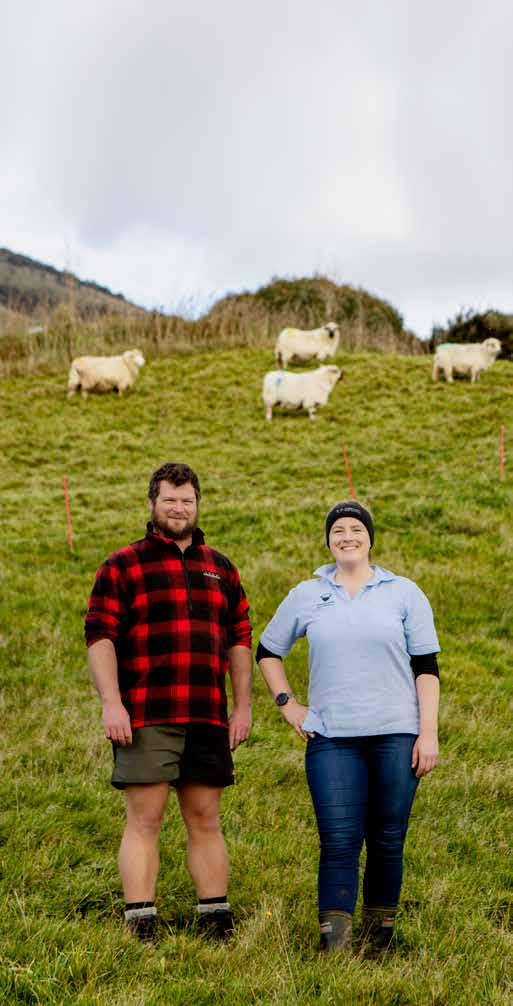
“We use a lot of texel ewes so they’ve passed on that muscly chunkiness to the lambs, because the Valais themselves can be quite lean and tall. I like having something cute in the paddock as well as them being useful.”Matt and Nikita both have full-time jobs outside of their farm.
and lack vital knowledge. “You get a lot of people buying five acres, getting sheep and leaving them in the paddock and not caring for them. From an animal welfare side of things, it can be quite bad when there are people who just don’t know. If they’re not sure about something, then they need to seek advice.”
Nikita says they make sure to provide information to new sheep owners on what to look out for, including what to do at different times of the year. “I’m also on the committee for the New Zealand Valais Blacknose Sheep Society, so we do a lot of educational posts there as well, because obviously with cute sheep you are going to get a lot of people new to sheep wanting them. Coming from the welfare side of things, I’d rather ask stupid questions than not ask them and have stuff go wrong.”

Matt and Nikita get their own information from a variety of sources, including their supplier of texels. “They were setting up about five or 10 years ago and they were going through what we are going through now,” Nikita says. “We catch up with him at shows, but he will message every now and again seeing how things are going, offering advice. He got advice from an older farmer down the road from where they are “
The local Farmlands store in Taieri has also been a useful source of information, she says. “They’re really helpful with all the weird questions I go and ask. They order stuff in when we ask for weird things. We’re in quite a dairy and lifestyle area so sometimes they do have to order things in, but they do that no problem.”
Although they are not swamped with spare time, Matt and Nikita do
manage to squeeze in some hobbies. Matt plays football in the local league and enjoys fishing for trout in the Waipori River, while Nikita enjoys gardening and makes rugs out of their sheep’s fleece. Their garden includes everything from currant and raspberries to brassicas, pumpkins and even chilis.
Possibly their most lucrative backyard product lately has been eggs, which they supply to five other families, Nikita says. “When you go to the supermarket there’s never any eggs on the shelf, so it’s good that you can just walk out and get fresh eggs.” With food prices continuing to soar, she expects to see more lifestyle block owners looking to grow their own produce. “There are more people trying to do more with their land, be more self-sufficient with all the wider global issues.”
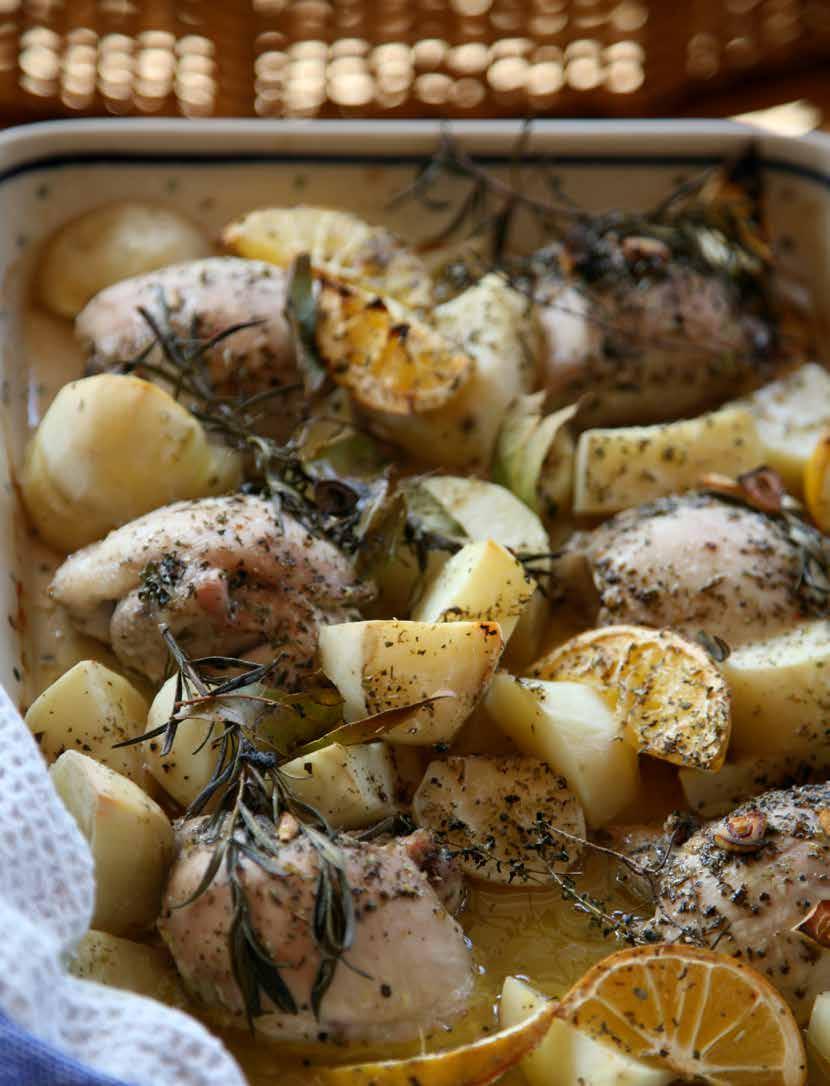
We caught up with the ‘Cuddly Cook’ Annabelle White at the Farmlands pavilion at Field Days in June. She gave us some helpful advice on how to do your best Gordon Ramsay impression in the kitchen.

ANNABELLE’S TOP FIVE TIPS:
Lemon juice: everything from a glass of water to a pot of pumpkin soup is enhanced with a squeeze of fresh lemon juice – the acidity in the citrus brings life to the soup pot. Even if you have a storebought salad dressing in the fridge, a squeeze of lemon makes a huge difference to the flavour profile.
Keep things simple: serve three things on a plate to friends – not five or six – and just have plenty of them. For example, the easy lemon chicken (see recipe) served with a coleslaw would be just fine, and there is no harm in buying coleslaw already in a pack from the supermarket.
Spend more time shopping (not at designer stores for crazy shoes) and less time cooking. Search out in the supermarket a few things that help you make better dishes at home. For example, buy Mutti canned tomatoes for that lasagne, not supercheap ones that lack flavour. If you can’t find Mutti the Watties seasoned tomatoes are good.
There is nothing wrong with preparing things like soups, stews, casseroles, even cakes and muffins ahead of time and freezing them. For example, recently I spent the day in the kitchen making 23 small cottage pies to put in the freezer for my elderly parents.
Learn to delegate and don't wait on people – you are not running a restaurant!
Never apologise if something is a disaster in the kitchen, just rename it! The cheesecake with a huge crack down the centre is now a slice of your “Grand Canyon Surprise” and the cheese muffins (when you forgot to stir the baking powder and they have sunk down seriously in the middle) become your "delicious cheese troughs".
Serves 4
This recipe is super simple and of course you can add other vegetables to the pan – but the herbs, garlic, oil and lemon juice is a fantastic combination. If you have fresh rosemary in the garden – add to the dish as well.
You can switch out the chicken breast to more affordable chicken drum sticks – but cooking with the bone in may take longer, but after the first time making it and checking the cooking progress you will know what to do! When cooking chicken, the juices should run clear when piercing the skin and meat to check progress.
INGREDIENTS
4 single chicken breasts
2 large potatoes, diced Salt and pepper
1/4 - 1/3 cup vegetable oil
2 Tbsp lemon juice
2 tsp minced garlic
1 1/2 tsp Italian seasoning
METHOD
• Preheat oven to 180°C.
• Arrange chicken in a single layer in a shallow pan.
• Arrange potatoes in same pan.
• Sprinkle lightly with salt and pepper.
• Combine vegetable oil, lemon juice, garlic and seasoning together and brush onto chicken and potatoes.
• Bake at 180°C for 50-55 minutes or until chicken is done and potatoes are tender when tested with a fork.
• Serve with a salad and steamed green beans.
You could serve this family favourite with herbed bread. Make your favourite garlic butter as per normal – crushing garlic and mixing with softened butter and adding some freshly chopped green herbs like finely chopped parsley, basil, oregano etc. Smear over the bread slices and wrap in tin foil and cook until warmed through and the butter has melted completely.

Resene and Farmlands are on the hunt for the country’s best rural Resene projects. Send in your photos and the stories behind your kitchen, shed, barn or bedroom – anything inside or outside that's painted, stained or wallpapered with Resene products!




The winning projects will not only win a $250 Resene ColorShop voucher



and a $250 Farmlands Gift Card, but will also feature in an upcoming issue of Farmlander magazine.

Cyclone Gabrielle caused severe damage to rural communities from Northland through to Hawke’s Bay. We look at how farmers and growers can rebuild to improve resilience and productivity.
 WORDS BY NIKO KLOETEN DAWN DUTTON
WORDS BY NIKO KLOETEN DAWN DUTTON
They say every cloud has a silver lining, but growers hit by Cyclone Gabrielle in February may be struggling to find one. Farmlands Technical Advisor Andre Lubbe says there are few positives for those who had orchards destroyed, but it has given them a blank slate from which they can start afresh with new trees, new ideas and even new technology.
“It’s things like new cultivars; introducing and planting with new varieties to keep up with world market, because older varieties are not profitable to export,” he says.
“It may be things like new rootstocks for apples, which are more suited to the area they’re going to replant. They can also look at aspects like trees per hectare and different pruning systems and bring in some of the new technology that’s now available. Those are all things people can look at, but they’re really expensive.”
Andre says growers will look at these things in time, when they’re going to replant their orchards in a year or two. In the meantime, he says, some orchardists are using their land to grow crops such as squash, maize, sweetcorn, peas and onions. “It’s an interim solution for them. Some of the orchardists will remove the trees, remove the silt, then they either crop it themselves or lease it to one of these big companies, which will help them with cashflow.”
Some growers have incorporated the silt into their soil, but Andre says this presents its own issues, as silt tends to be high in sand and not very fertile. “Where I am based, there were a lot of slips from the hills, very high PH silt which can change a lot of these paddocks from a soil fertility point of view. We do a lot of soil testing at the moment to see where they are with the silt; how did that actually change the whole make-up of the paddock?”
One of the aspects growers are likely to investigate post-Cyclone Gabrielle is weather protection. For Northland avocado growers Garry and Charlene Cliff, the cyclone offered a real-world experiment for

the effectiveness of the polythene tunnels they had installed on a small section of their orchard.
“In a good year you pack out in the 60s-70s (percent) class one. Our first pack-out this year was in the 30s and there are people in the 15s and 20s as well, so it’s putting a lot more pressure on getting rid of that class two and three stuff in the local market as well,” Garry says.
“We’ve got half a hectare of avocados under poly tunnels. Our pack-outs in there are generally in the high 90s, so there is stuff out there to mitigate those things. All of that comes at a cost, and we haven’t made any money in three years.”
The cost structure for the tunnels is about $220,000 a hectare, and Garry says planting and irrigation add up to another $30,000.
“We’re still going down that road, if we can get up to 15 tonne/ha in the tunnels we will make money. The trees
are currently three to four years old and we’re running at about 8 tonne/ ha. You can retrofit for existing trees, but it depends on row spacings and things like that.”
Phil Reed, New Zealand distributor for US-based crop protection manufacturer Quiedan, says he got into selling the tunnels after a kiwifruit orchard he was involved in got “smashed” by PSA. While demand from kiwifruit growers dried up after the more PSA-resistant G3 variety was introduced, he says there has been strong interest from growers in other parts of the horticulture industry.
“You look around the world and they’re 30 years ahead of us over in Europe. They have massive areas of tunnel houses over there covering everything you can think of. Our conditions are better than over in Europe so we haven’t done it previously, but with the cost of
“Our conditions are better than over in Europe... but with the cost of land being so expensive now we have to get more productive.”Phil Reed. Phill Reed started looking into tunnels after his kiwifruit orchard was hit by PSA.
Total cost of weather events ($ million)
land being so expensive now we have to get more productive. That’s what tunnels do: they increase productivity, increase pack-outs and take away the risk.”
While much of his work initially has been with blueberries, strawberry growers are starting to come onboard after a horror year weather-wise. “Avocados are starting to get some traction but the problem is they are in the doldrums and everyone has their orchards on the market trying to sell them,” Phil says. He says they have also started doing subtropical fruits like bananas, papayas, pineapples and lychees.
“I’m trying to get a guy up north to grow me some mangos, because mangos are very similar to an avocado tree. I’ve even spoken to people in the Waikato who had some Colombian guys come over and they’re talking about coffee. The climate is changing over there - the climate is getting too hot in some areas and there’s not enough water. If we can grow coffee, we can grow all sorts.”
While the cost equation of tunnels makes sense for many fruit growers in the long term, Phil says funding the investment is challenging, particularly
at a time when money is already tight across much of the industry. “That’s the problem have now, we’ve been quiet for about eight months and in the last six weeks we’ve started getting more inquiry. I’ve never seen a year when everyone’s been smashed.”
Some help is on the way, with the Government announcing a support package in late June for cycloneaffected growers and farmers. “There will be three components for different types of support: a loan guarantee scheme in partnership with banks and other lenders who choose to participate, and a concessionary loan and equity scheme run by Kānoa to help hard-
hit businesses get to a position to be able to re-engage with their banks and work toward being cash-flow positive again,” Finance Minister Grant Robertson said at the time.
The support package is “certainly better than nothing”, according to Farmlands Head of Sales and Strategy – Horticulture, Chris Binns. “Any support with underwriting loans and assisting with interest rate reduction may well be enough to aid some of these farms to actually start the process of rebuilding. It will be interesting to see if they can come out with any more support over the coming months, as this rebuild will be a matter of years, not weeks or months.”
The insurance industry also has a significant role to play in funding the cyclone recovery, according to FMG’s Head of Recovery Response Jacqui McIntosh. “Think about what Christchurch would look like if over $30 billion of insurance money had not been pumped back into it. As an industry we’ve already pumped in $1 billion within the first three months after Cyclone Gabrielle.” Weatherrelated pay-outs are set to hit another record this year, after rising sharply over the last few years (see graph).

Jacqui says there are a number of insurance policies available to those in the farming and growing sector, but there are also many situations where insurance isn’t available. “Land in an orchard is a good example; there’s no cover for land in a commercial situation. New Zealand only has land cover through Toka Tū Ake EQC and that is limited to around residential property, but we are the only country in the world that actually provides any kind of land cover through insurance,” she says.
“Often rural people live where they work, so they tended to focus on the types of insurance they know well, like the house, contents and vehicles,” Jacqui says. “Then you’ve got their commercial premises, packhouses, operating equipment and what we typically see is they take relatively good care of that cover. When it comes to fencing, smaller buildings, and things like fruit bins, or stock, that is typically the point our clients start to feel like “that’s not worth insuring, nothing’s going to happen at any particular scale” and so will just take on that risk themselves.”
Jacqui says Cyclone Gabrielle has highlighted some vulnerabilities for rural clients that often come up during weather events. “One thing we see time and time again is access to properties, so people need to really think about their access points. If you’ve only got one way into your large farm or growing area, that is a massive risk, especially if that accessway involves a bridge or culvert.”
Karen Williams, Rural Proposition Manager at FMG, says people talk about ‘building back better’ from major events like cyclones, but she prefers ‘build back smarter’, as it suggests doing things differently and re-thinking your approach. “It means we’ve looked at technology, we’ve looked at different designs, we’ve communicated with different communities, we’ve identified vulnerabilities relating to areas where we should just never go,” she says.

“If we focus on ‘build back smarter’, that brings in all sorts of expertise, but
the key thing is it takes time. You need time to go through those processes and understand and assess and evaluate, and to use all your resources, whether
it’s satellite data, new flood modelling, or the way your soil responds to increased floodwaters.”
However, there are smaller, more immediate things farmers and growers can do to reduce risks and improve resilience, Karen says. “We live on a flood plain and we’ve re-fenced over the last 20 years and we’ve just got posts and wire. We don’t have battens and you don’t need to have them; you’re actually collecting a whole lot less debris when flood flows come through. It’s a much easier clean-up job, believe me.”
Karen’s number-one piece of advice to rural clients is to talk about their insurance needs early, to identify any risks or issues that may be associated with new projects. “Before you build on your land, you talk to the bank to access finance. We’d like to be part of those early conversations as well, so that we’re not left at the end of the process.”
FMG has reached a significant milestone in the post-Cyclone Gabrielle recovery process, having already paid out more than 50 percent of its cyclone-related claims. According to FMG’s Head of Recovery Response Jacqui McIntosh, most of the claims paid out so far will likely have been fairly simple. “It might be that the power went off and you lost the contents of your freezer, or you lost half a dozen items in the implement shed because it flooded, like your chainsaw and your ride-on lawnmower.”
Jacqui says FMG have modelled that they will have 90 percent of claims closed by the end of their financial year, which is the end of March 2024. “Of the remaining claims there’ll be a chunk of those in there that are complex, but I
expect most of those will close out within 18 months.”
For some unlucky farmers and growers, the process may take even longer. “The industry still has claims open from Kaikoura, still open from Canterbury, not because of want of trying, but when you offer clients money they need to accept it, and sometimes they want to go down a path of talking to legal experts,” Jacqui says.
“A lot of our clients will want to understand the land categorisation outcomes before they accept money from us, not because they’re connected, but that’s just how some people think – they want to understand how the insurance will work and how the government compensation will work before they accept any money for either.”
To talk to FMG about your insurance needs, call 0800 366 466 or visit www.fmg.co.nz


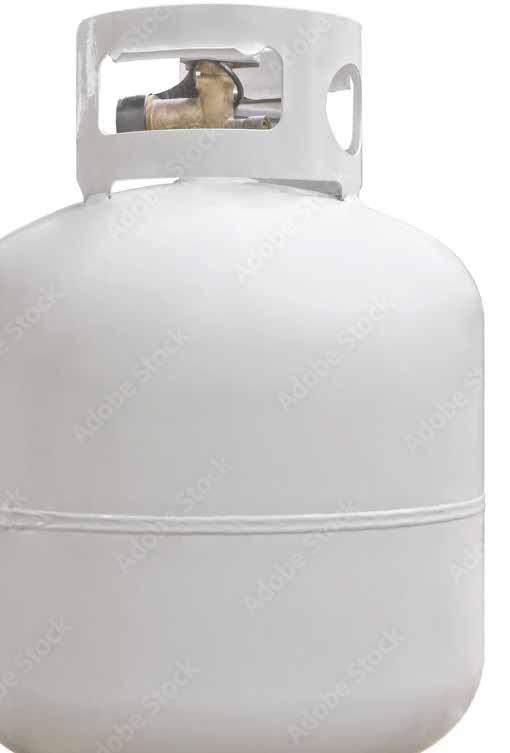


The skill shortage is a headache for many Kiwi businesses and agriculture is no exception. According to Farmlands Head of Technical Training Nova Knight, this was just one of the reasons for launching the 12-month AgronoME programme. “You can’t just hire in an agronomist anymore because they’re such a limited resource in New Zealand,” she says. “It’s about being able to look at the talent you’ve got within and invest in them.”
The three AgronoME cadets – Gemma Dorotich from Culverden, Wazza Pope from Hāwera and Gerrard Pile from Oamaru – not only cover different parts of the country but have different backgrounds, areas of expertise and hold a deep understanding of the co-operative and our shareholders, developed through years of building relationships in the field.
Gerrard also brings extensive previous experience in plant research and wheat breeding, and has also worked in animal genomics for AgResearch. “I mainly deal with sheep and beef, and arable shareholders, I’m excited to be able to bring more of my passion for research into my role at Farmlands”.
AgronoME is not the only way Farmlands is supporting Gerrard, who lives on a small lifestyle block near Waikouaiti with his wife Rachel and their three school-age children. “I’m in the process of finishing off a Master of Science with Lincoln University, which I started about 12 years ago. Life got in the way, kids came along, but thanks to Farmlands I can finish it.”
Gerrard says he is enjoying the people-focused aspects of AgronoME as much as the technical. “We’re going through leadership training, as it’s not just a strict technical role, you’re also a leader out in the field as well. We’re also working on one-on-one mentoring and presentation skills, because we will be presenting at training events, seminars, and events like Fieldays”
Gerrard says he learned a lot at the first AgronoME workshop, where he got to meet not only the other cadets but the existing Farmlands agronomists. “It was great to meet the national agronomy team and learn how they work, because everyone works and interacts differently.

We covered off going through our Gallup Strengths, what they are, how they relate to others and how we can use our strengths to work as a team.”
“We see our agronomists as not just tech specialists, but Farmlanders who take on a leadership and development role that will be key to growing capability across the co-op, helping to strengthen our market position and re-establish us as the number-one buying group for New Zealand farmers and growers.” says Nova. “In addition our agronomists lead regional training activity, alongside our regional sales managers and the programme will see them develop relationships with key suppliers and work with various areas of the business to form a connection with our shareholders.”
A trio of Technical Field Officers (TFOs) recently became the first ‘AgronoME’ cadets, with the goal of becoming Farmlands Agronomists. We take a closer look at the new programme.Gerrard Pile.

Bridgestone, has once again been New Zealand’s Most Trusted Tyre Brand in the annual Reader’s Digest Most Trusted Brands survey.
Bridgestone took out the coveted title for the seventh straight year, with the Firestone brand also highly commended in the tyre category.

The annual Reader’s Digest’s annual Most Trusted Brand survey sees New Zealanders asked to rank the brands they turn to and put their faith in across more than 71 categories and more than 500 brands.
"The most important factor influencing a motorist’s choice of car tyre is absolute reliability in all sorts of conditions, and that’s why Bridgestone tyres are trusted for quality, safety and performance,” said Louise Waterson, editor-inchief of Reader’s Digest magazine.



According to Bridgestone’s Director of New Zealand Business, John Staples, it’s no coincidence that Bridgestone has retained the title for seven straight years. “We’re honoured to be New Zealand’s Most Trusted Tyre Brand for a seventh successive year, and it and speaks to the unquestionable quality and reliability of Bridgestone tyres. We have a commitment to our customers to provide safe, reliable and quality tyres, as well as deliver trusted, expert service” Mr Staples said.

Renowned dog trainer and trialist Lloyd Smith has spent more than 50 years with a whistle in hand, winning sheep dog trials across New Zealand. He shares his proven methods to unleashing a canine companion's potential as a farm dog.
 WORDS BY AYLA MILLER KERRI BACK
WORDS BY AYLA MILLER KERRI BACK
Lloyd Smith’s association with working dogs can be traced back to 1969 when he left South Otago High School and began working on Hazeldale, situated up the Clinton Gorge in Southland.
Initially planning to pursue studies at Lincoln College, he soon discovered a passion for stock work and gradually assembled a “motleylooking bunch” of dogs, but a team regardless of appearances.
“Looking back, they weren't really of any great consequence and that was probably more my fault than theirs. But they got me started,” Lloyd recalls.
Moving on from the Clinton Gorge, he began mustering at Nokomai Station south of Lake Wakatipu, first under the guidance of head shepherd Bob McKay, then later under Larry Murdoch. It was during his time in the hill country alongside these seasoned stockmen, including the likes of Ted
Phipps and Sam Boynton, that he absorbed the principles of effective stockmanship and learnt the skills to train a dog in accordance with those principles. “That's where I sort of got the bug,” he says.
During those early years, he exclusively trained his dogs using livestock. However, later Lloyd modified his approach, dedicating a significant portion of basic training away from sheep, where only he and the dog are present. This allows him to focus on establishing the dog's command without the distractions of sheep, reducing it to a simple matter of obedience between the two of them.
In 1982 Lloyd attended his first sheep dog trial championships and since then has been placed 61 times, including winning five New Zealand titles and five South and North Island titles. He has also been selected twice for the New Zealand Test Team competing against Australia. All of these results were with dogs he trained himself.
One of the most common mistakes Lloyd sees people making when training their dogs is having a lack of patience – a mistake he admits he also made early on in his career.
“Over the years, you learn to be more patient. A lot of people want everything done in a hurry and that just doesn't work that way when you're training dogs. It's about taking your time, one step at a time, and working your way through the stages of training until you've got the dog trained,” he says.
Recognising when a dog is ready to be trained is a skill learnt over time, but Lloyd says a young dog who is ready will demonstrate a desire to work stock. If training begins before the dog shows that desire to work, then the animal may not understand what the trainer is trying to achieve, resulting in a loss of interest from the dog and a disillusioned trainer.
In terms of choosing the right dog for the farm, Lloyd says it differs greatly from one farm to another depending on the circumstances, but there are two main types of dogs that
suit being sheep dogs: heading dogs and Huntaways.
Huntaways are known for their boisterous, energetic nature and are well-suited to forcing situations such as driving mobs through the yards or shifting sheep, while heading dogs are quieter and will work in a calmer manner. However, both can be trained to work across a variety of situations.
When choosing a dog for your farm, Lloyd recommends starting with a young pup with good breeding behind it, as training a dog can be a long-term project.
“Some of them are a lot more trainable than others and that's a big help. Some of them exhibit a lot more natural talent as far as handling stock goes.”
One piece of advice he gives to all dog trainers would be to spend as much time as possible with their dogs while they are pups. Properly training a puppy requires dedicating a significant amount of time, specifically from the weaning stage (around
realise by the tone your voice that they are doing something undesirable. And it's not all about growling, it's about recognising and rewarding progress made with a reassuring, rewarding voice,” he says.
“The puppy stage is about getting them in the right frame of mind, for future training and obviously creating a bond. You and the pup should have a good relationship.”
“It still comes down to really getting control of your dogs, because if you've got control of your dogs, it allows you to have better control of your stock.”
Despite the many changes that have taken place within the agricultural industry, from technology to farming practices, the role of working dogs remains just as critical as it was when Lloyd first began his journey. These intelligent, loyal animals continue to provide essential support to farmers across the world, helping them manage their stock with skill and dedication.
eight to ten weeks of age), up until approximately eight to ten months of age, when more intensive stock training begins.
Lloyd says it is important to ensure the puppy understands that it needs to conform, and that it recognises and responds to a particular tone of voice.
“The biggest single asset you have when you're training a dog is to be able to growl at a pup and get them to
As we look to the future of farming, it's clear the bond between farmers and their canine companions will remain unbreakable. Thanks to remarkable individuals like Lloyd Smith, the legacy of the working dog will continue to endure, inspiring generations of farmers and dog trainers alike to recognise and appreciate the vital role that these animals play in our lives.

Why can fleas prove difficult to eliminate? It hinges on their lifecycle where ninety-five per cent, the larger proportion of the flea population, lives in the environment. Knowing this is vital for when, where, and what control measures you can optimally use to put the brakes on their lifecycle.
With fleas, proactive prevention is always better than cure. How? Firstly, use an effective treatment that kills fleas fast and stops more eggs being laid, such as Evance or Petscience. Also, because fleas are a tapeworm intermediate host, using an effective wormer for your dog such as Aristopet Drontal is important.
Secondly, by proficiently managing the other critical area – the fleas in your dog’s environment – their bedding, kennels, flooring, and those picked up out and about in the garden, the park, the beach, or out working on the farm. It is all about reducing the risk of environmental flea numbers escalating, not solely focussing on your dog, or even your cat! Cats are a very significant reservoir of fleas, so ensure that all your pets are on a safe flea treatment schedule. So, using the onset of spring as a minimum period to step up treatment, it is absolutely vital to have good flea control protocols in place as temperatures warm into summer.
Fun flea facts
• The cat flea species is the most common on dogs.
• A female flea consumes 15 times her weight in blood daily and can lay 2,000 eggs over her lifetime.
• Fleas can survive over 100 days without feeding. Pupa can survive two years before hatching.
• Fleas can jump up to 150 times their length, accelerating 20 times faster than a space shuttle.
• Fleas cannot swim but nor do they drown, because they are able to float on the water’s surface.
Features & Benefits
• Contains three 2.5ml applications
• For medium-sized dogs between 10-25kg
• Prevents and treats fleas and their larvae
• Contains the same active ingredient as the product from your vet.
• Monthly application is recommended to keep your dogs and their environment flea-free in all cases
Active ingredient: 100g/I Imidacloprid.
Features & Benefits
• Contains three 0.4ml treatments, each lasts four weeks
• For effective treatment and prevention of fleas on cats that weigh over 4kg
• Contains the same active ingredient as the product from your vet.
• Larval stages in the pet's environment are killed following contact with a cat that has been treated with Evance.
• Monthly application is recommended to keep your cats and their environment flea free.
Active ingredient: 100g/I Imidacloprid
• Aristopet® has a range of products to ensure that cats and dogs are protected from worms, as well as birds, small animals and poultry.
• All active ingredients are clinically proven and highly effective and safe for pets.
• Broad spectrum all wormer for dogs and puppies up to 10kg in body weight.
• Treats and controls all 11 gastrointestinal worms, including different species of roundworm, hookworm, whipworm, tapeworm, plus hydatid tapeworm.
• Does not control heartworm in dogs.
• Easy to administer, a single dose protects adult dogs for up to three months (six weeks for hydatid tapeworm).
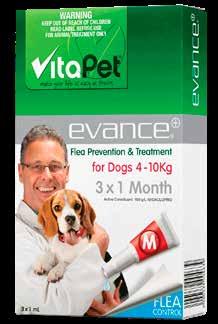
WashBar’s skin and coat care products for dogs are carefully formulated to harness the benefits of natural ingredients. The next step was to make sure those ingredients were of the highest quality and to source them locally where possible.
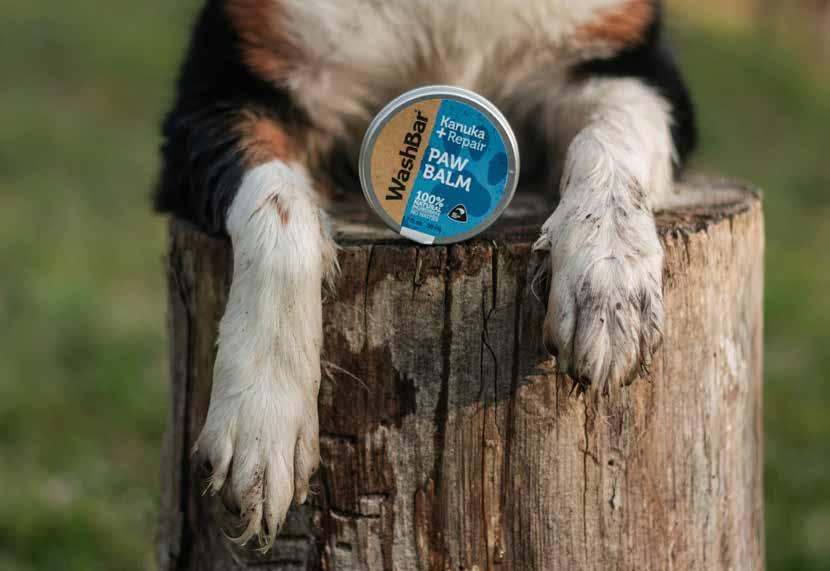
After much research WashBar found incredible local producers for many of their active ingredients. With lavender oil from Amberley, mānuka oil from the East Cape and beeswax from Alexandra, WashBar’s products are literally made from New Zealand. Bottles, packaging and labels are all made in New Zealand and the rest of the business is local too. With a head office in Lower Hutt and manufacturing facilities in Auckland, WashBar is proud to support local economies all over New Zealand.
You may find yourself wondering why - why choose choose ingredients that are often more expensive? Why not go for the quick and easy route of importing in bulk?
It’s because sourcing locally means transparency and gives quality benefits you just can’t get from importing.
WashBar CEO Louise Knight says the mānuka oil they get from Tairāwhiti on the East Cape is a great example of this. “We’ve learned that not all mānuka oils are created equally. The efficacy of the oil and its benefits around skin health all comes down to the level of triketones. Knowing that our supplier’s oil has some of the highest triketone levels in the world gives us confidence that our products will work. Having that direct relationship with the supplier means we’re assured the quality is always there.”
Renowned for its anti-bacterial and healing properties, mānuka oil is a crucial ingredient in many of WashBar’s products. Having access to the best quality oil is vital, so the long-lasting supplier relationships that have been fostered over a decade give stability and reliability to both parties.
WashBar also believe that every decision has an impact, so it’s important to consider the consequences of our actions. If everyone buys the cheap imported option, what happens to our local producers? If local businesses shut down what happens to our economy? When you buy WashBar from your local Farmlands store, you’re not only supporting your local economy, the effect also radiates out across New Zealand, to maintain and create job opportunities and support other local businesses to help stimulate economic growth and prosperity.
WashBar is New Zealand’s original natural pet care brand - founded on the philosophy that natural ingredients are safer and just as effective as synthetic.
William Irwin was one of Southland’s earliest pioneers, having arrived in Dunedin from County Derry, Ireland on the SS William Davey in 1875. He began breaking in 200 acres of his allotted flat ground in the Hokonui district in 1877, paying £250 when given the title in 1880.
William and Elizabeth had 12 children, nine of whom survived infanthood and the journey to New Zealand. They all attended the
now-closed Hokonui School, and on Sundays the family would drive by buggy to the Forest Hill Church where William played the organ. To supplement his farming income, William helped to pitsaw logs for timber for homes built locally and helped form the local wagon tracks into roads using horse-drawn drays and pick and shovel.
William and Elizabeth's son Robert and his wife Celena took over the farm in 1913, by which time mechanisation had sped up the rate of progress.
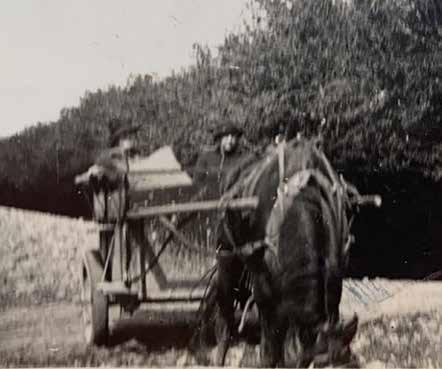
Heavy crops of ryegrass and clover were produced and in 1928 a crop of oats yielded 120 bushels to the acre.
Robert and Celena's son Leslie took over the farm in 1937. Leslie and his wife Eileen built a homestead in 1951 and a woolshed in the 60s. Leslie also purchased additional blocks of land in Hokonui and closer to Winton. These blocks are still farmed by the family today. Like the generations before and after, Leslie spent a lot of time in a ditch, draining the land.
Leslie and Eileen's son Lindsay and his wife Teresa purchased the farm in 1976. They continued to farm sheep on the original land and in the difficult years after the 1987 stock market crash, they managed to purchase a nearby block in 1988. This was later sold to buy adjoining land in 1999, bringing the total farm to 520 acres. This adjoining land had been owned for several decades by William’s son Samuel and family, so the purchase brought it back into the Irwin family.
Lindsay and Teresa's son Gareth and his wife Anna took over the farm in 2010, farming with their children who are the sixth generation of Irwins on the land. Gareth continues to run sheep and grows a small amount of crop. There are reminders of Gareth’s ancestors on the property – a two-storey horse stable from the 1800s, a concrete house-cow shed and hand-dug tiles uncovered when doing repairs.
In the heart of central Southland, the Irwin family has been been farming the same land since 1877.David Irwin, 1924.
Introducing O2B K9 Plus®, a comprehensive, premiumgrade mobility supplement, scientifically formulated for dogs of every breed and size. Infused with 100% natural marine ingredients sourced from the pristine waters of New Zealand, this supplement is carefully crafted to support your dog's overall wellness, focusing on joint health specifically.
O2B K9 Plus® not only delivers a daily burst of essential vitamins, minerals, antioxidants, glycosaminoglycan, and trace elements but also doubles up as a delicious treat for your best mate. Safe for long-term use, O2B K9 Plus® seamlessly integrates into any diet and teams up well with O2B Omega-3 Fish Oil for enhanced benefits.

Lloyd Smith, a celebrated dog trainer with over half a century of experience under his belt, has clinched 47 placements, including five national and five regional titles. For over a decade, Lloyd has trusted in and collaborated with O2B Healthy, a family-owned business dedicated to manufacturing
high-quality, natural health products in a purpose-built facility located in Nelson. Attracted by the exceptional quality, Lloyd has incorporated O2B K9 Plus® into his canines’ health routine and the results speak for themselves. “Farm dogs are the endurance athletes of the K9 world. The impact from running and jumping can take its toll over the years. K9 Plus has played a crucial role in my dogs’ overall mobility, supporting swift recovery after a rigorous day in the paddock,” says Lloyd.
Signs of joint complications can include a reluctance to be active and stiffness of movement. Thanks to pioneers like Lloyd and the reliable solutions provided by O2B Healthy, the future of working dogs and their trainers is strengthened for generations to come. Step into the future of joint care and mobility with confidence, unleashing excellence with O2B K9 Plus®

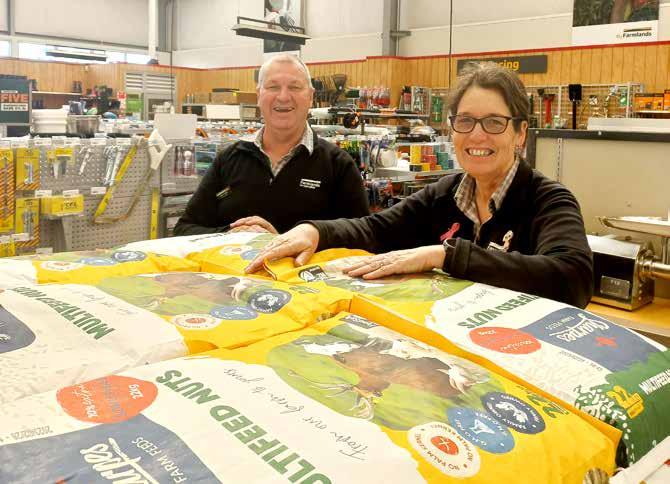
Farmlands’ multi-year programme to reset its role as your buying group, connecting customers to essential rural supplies, is in full swing. Our new range is now available across 50 percent of stores.
WORDS BY ALICE SCOTTFarmlands is undertaking a multi-year work programme to transform how it buys, stores and provides its customers with their rural supplies – with the core focus on supporting on-farm profitability. Ultimately this work will reset the co-
operative to be the number-one rural supplies buying group, create scale to support better buying and more ability to pass benefits on to customers.
The first phase of this work is focused on reviewing and changing Farmlands’ product range. This means
really understanding the products required by customers from a base range perspective. This is critical to leveraging the co-operative’s buying scale, as well as creating local range perspective that meets the regional requirements of our customers.
“In the past our range developed locally with no properly structured core range. This limited our ability to build effective, centralised supplier relationships and buy in bulk at a better price to benefit all our customers.” says Farmlands Chief Merchandising Officer, Chris Fisher. “There is no large retail business that I know of that meets customer needs in a profitable way without centralised buying.”
“For over a year now we have been resetting how we manage our product range, creating the insights to determine the products our customers need and engaging suppliers as we optimise our range.”
Farmlands’ new approach is visible for customers today, with the new product range across more than half of its retail stores. The product roll-out has been happening since February and all stores will have the new range by Christmas.
Farmlands Marton was one of the first stores to make the shift. Business Manager for the store, Stephen Wills, is seeing more demand for product quotes.

“People are feeling the need to shop around to make sure they are getting the best price. It’s been great to know we can offer products at an even sharper price than before.”
“We have been able to introduce new products. Home butchery is an area we would not have thought would be in high demand but is selling well. Also, the introduction of Milwaukee power tools has had a lot of good feedback; it’s a very comprehensive line-up, good quality and extremely well-priced.”
Stephen says the store’s layout has also got the tick of approval from customers and staff. “It’s all very clean
and tidy and clear what products are being offered. We are learning as we go, and the introduction of some products has not been perfect, but we now have a clear way to provide customer and staff feedback.”
The changes have met the approval of Farmlands shareholder Marcus Nitschke, a Marton arable, cropping and sheep and beef farmer. “The store looks good; it took a little while to work out the new layout, but I have figured it out now,” Marcus says. “I love the Milwaukee range and the Bremmick screw range is good. I haven’t missed any of the deleted lines, and I haven’t had to go down the road for anything.”
Farmlands’ retail network accounts for around 30 percent of its business, with the other 70 percent coming from on-farm sales. We need to design a supply chain that leverages our buying scale and efficiently delivers to our stores and direct to farm. This is where the next phase of Farmlands’ transformation comes into play, along with Farmlands’ newly appointed Chief Supply Chain Officer, Caleb Nicolson.
“Over the next few years, we need to create a full end-to-end product distribution solution that best meets all of our customers’ needs, making it easy to do business with us and ensuring that our products travel via our network and onto your land in the most efficient way possible,” Caleb says.
“We are already working with some of our key suppliers to hold product in our distribution centres to enable faster delivery of our product to stores and directly to customers. This is a significant change and will take time to work through with all our suppliers, however we are already seeing positive results.”
Farmlands welcomed new Chief Supply Chain Officer Caleb Nicolson to the team in July, marking the occasion with a mihi. He is responsible for forecasting sales across all customer channels, purchasing and manufacturing, and moving product to our branches and direct to customers across all sales channels, leveraging both our own and partners’ distribution networks.
Caleb and his team leverage our buying power and logistics scale to deliver to agreed service levels and effectively manage the cost, resulting in competitive pricing for our shareholders.
Caleb has 20-plus years of experience in supply chain leadership, having worked across some of the most well-known and largest distribution networks in New Zealand and beyond.
Caleb is all about the outdoors - the ocean is his playground. He was born on an orchard in Muriwai, Auckland and his father still potters around with a little block of kiwifruit in the Bay of Plenty.
“For over a year now we have been resetting how we manage our product range, creating the insights to determine the products our customers need and engaging suppliers as we optimise our range.”BY
There’s an app for that: Smart farming with FarmIQ Farming is, and always has been, a highly variable, changeable pursuit. Results can vary wildly from one year to the next and nothing is guaranteed.
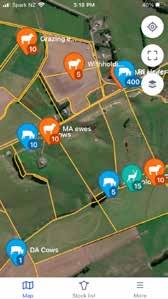
Luckily, Kiwi farmers are a highly adaptable bunch, finding new ways to do things better during both good and hard times. Increasingly, that’s a matter of capturing as much useful on-farm data as possible - and then connecting it all together to make better business decisions.
That’s where Kiwi-owned farm management software solution FarmIQ comes in. Used by over 3,500 farms across New Zealand, the FarmIQ product helps Kiwi farmers capture and crunch all their important everyday data to get clearer visibility of their business, to drive better decisions and improve performance on the farm.
From tracking animal health treatments; recording animal sales, births and deaths; animal weights; pasture cover; fertiliser applications; rainfall; health and safety information; staff timesheets and more, FarmIQ lets users record all on-site activity,
analyse and share the results, and manage farm operations from a convenient central information hub.
“Whether you’re running a data and technology-intensive operation, or just someone trying to get their licence to farm, FarmIQ can support that by bringing all your data into one central hub,” says Russell MacKay, head of sales and marketing at FarmIQ.
“The mobile apps cover all your day-to-day farming - all of your mob moves, animal health treatments, land applications et cetera - and then the desktop version is where you can dive into the reporting and benchmarking tools to help discover those opportunities.”
“In farming, margins are getting slimmer and FarmIQ is a great way to try and find that extra dollar.”
Inter-operability with other systems and software is a key focus for FarmIQ’s development team.
“Farms are having to record certain pieces of information in one program, then use a different program to record another kind of information, and that’s just not efficient,” says MacKay.
“With FarmIQ we have integrations with other businesses, to bring all that information into one place. When you’re moving cattle or deer, you have to notify Ospri or NAIT, so our software ‘talks’ to theirs. If you do any sales or record any deaths or have grazing stock moving around, that will automatically update NAIT.”
“We have Gallagher and Tru-Test ear tags integration, and we also integrate with farm financial software Figured, and GPS guidance solution Tabula (formerly TracMap), among others.”
The company is continually rolling out new features. Latest releases include the ability to view mob movements on the map, as well as new hazard and feature layers. A new version of the app has recently been rolled out.
“We're hell-bent on continually improving our product,” says MacKay.
“FarmIQ will never be a ‘finished product’. It will change forever, along with the farming industry as it changes. Compliance is only becoming more and more of a burden and at FarmIQ we’re dedicated to easing that burden for the Kiwi farmer as much as possible.”
The New Zealand farming industry has undergone a profound digital transformation in recent years, as farmers adopt smart new tools to help them better manage their farms, workdays, and their health. We look at three of the best on-farm tech solutions out there right now.
WORDS
JONATHAN COTTON
It’s a challenging time to be a Kiwi farmer: volatile international markets, complex regulation, the labour shortage, and the list goes on. It all adds to the imperative to operate as productively as possible - and to take steps to improve efficiency on the farm whenever and wherever you can.
“New Zealand farming has always been an industry that focused on innovation, exploring new avenues of technology, and really looking at how innovation can drive profitability onfarm,” says Mark Maitland, business development manager with agriculture industry pioneer, Gallagher.
“Yes, there are always challenges on-farm, but those challenges also create opportunities for innovation and technology to really drive New Zealand farming into the future.”
Established in 1938, Gallagher - a global company headquartered in Hamilton - produces animal management solutions designed to help farmers operate more responsibly, productively and profitably. Leading
Gallagher products include smart electric fencing systems, high-tech weighing and electronic identification products (EID), and more.
Mandatory EID tagging is driving the potential for better monitoring of the growth rate performance and other key data on individual animals. Gallagher’s weighing solutions - which integrate with its EID (electronic identification) products - streamline this frequently onerous weight-tracking process with a cloud-based platform.
“Traditionally, this was a very handson, manual process,” says Mark. “The farmer had to weigh the animals, then had to physically take that weight monitor home, plug it into the computer, and go through different steps to download the data. Only then could they try to analyse those numbers and make some management decisions based off them.
“With Gallagher’s weighing and ID solutions, the farm owner doesn't even have to be on the farm. The staff can weigh the animals, then, with the literal press of a button, send all that data to the cloud. The farm manager or overseer can access that data immediately, from anywhere in the world.
“That removes those pain points around data sharing and data integration, allowing farmers to make much more informed management decisions in real-time.”
Similarly, Gallagher’s i-Series Energizer Intelligent fence solution provides real-time performance data for those wanting to better manage and monitor their electric fence system.


“Really understanding your fence performance can be critical,” says Mark. “With the Gallagher solution, a farmer can monitor the entire fence system 24/7, knowing when there is a critical fault on the fence, and being able to identify where that fault is.”
Users of the i-Series can segment their fence lines into up to six different zones, helping to pinpoint where problems exist and making it easier to manage repairs - a process which could otherwise take days or weeks.
“It’s easy to find where the fault is, and when you're out there fixing the issue, you can open up the app and turn the fence off right there on your mobile phone.”
“It's a really powerful tool and the beauty of it is that we've built all of that into an easy-to-use phone application,” says Mark. “You can focus on the task at hand knowing you’ll be alerted if a problem arises.”
“There’s just no replacement for having real-time accurate data right there in your back pocket.”


While ready access to medical help has rarely been convenient for farmers, now, with just a few taps on their phone, tablet or any smart device, Kiwi farmers can get connected one-on-one with an experienced GP online when they can’t easily access their own GP. CareHQ connects you online with a health professional for convenient, quality healthcare at a time that suits you, and it’s free for Southern Cross Health Insurance members.
CareHQ is a virtual GP consultation service that lets Kiwi farmers access doctor consultations via their phone, tablet or computer, seven days a week, 365 days a year, between 7am to 9pm.


No more waiting for GP appointments or trying to find time during the 9 to 5. Whether it's medical advice, a script for your pharmacy, referral letters or health certificates for your job, CareHQ’s online GP consultation service connects Kiwi farmers with a medical professional when they need it.
The CareHQ virtual GP service, created with the help of Southern Cross, has been in operation for two years (in that time completing more than 36,000 consultations), providing essential consults for New Zealanders as traditional health services found themselves stretched through the Covid-19 pandemic.
“Many of the practices CareHQ supports have faced ongoing high demand for healthcare due to the pressure of the pandemic and the acute current lack of GPs,” says Dr Reza Jarral, clinical director of CareHQ.
“CareHQ is a service that lets rural people access care when they need it. By making it easy to treat those minor issues as they occur, we can reduce the risks of complications and serious health problems, we're going to reduce the time spent off the farm, and we're going to reduce the burden on local emergency services and local GPs who are already stretched as it is.”
Dr Reza says that CareHQ is designed to provide a convenient point of contact for rural communities, but is not intended to take the place of rural brick-and-mortar doctors.

“CareHQ works respectfully in collaboration with rural doctors,” he says.
“We are not looking to replace rural doctors; we're looking to support them.

We co-design these services directly with them, and we’re not enrolling patients, so we don't take patients away from small general practices in rural New Zealand. Neither do we charge clawbacks to local practices, which is the industry standard.
“The rural community is incredibly important to CareHQ. We want local health professionals and services to survive and flourish and we're here to support their good work.”
CareHQ has now extended its operating hours (from 7am to 9pm), perfect for those people who can't be seen during business hours, and the group has recently rolled out a new injury management service, along with functionality targeted to international visitors who might need extra help navigating the New Zealand healthcare system.
Southern Cross Health Society members can access CareHQ via the My Southern Cross app.Spark has released further details about its satellite plans with a satellite-to-mobile trial to extend coverage for mobile customers set to launch at the end of the year, and a business satellite broadband service which is already in trials with some customers.
The satellite-to-mobile service will be delivered in partnership with satellite provider Lynk Global, with an initial trial set to launch as early as the end of the year.
This initial trial service will enable text messaging periodically during the day, building towards a more regular service during 2024 as more commercial satellites are deployed. At that time, the service will be offered to Spark customers more broadly. Spark also intends to offer voice and data services in the future, as these services become reliably available.
Spark will release more information on who will be able to participate in the trial, the opt-in process, and specific timings in the coming months.
Spark Product Director, Tessa Tierney, says, “We believe satellite has an important role to play in connecting Aotearoa New Zealand. While satellite can’t provide 100% coverage – as you need a clear line of sight to the sky to get connected – it certainly adds an additional layer of resilience, particularly now, as we face increasingly severe and frequent weather events due to climate change. And once there are more satellites launched and the service is available more broadly, it will allow our mobile customers to start to use their phones in more areas that aren’t reached by traditional mobile coverage.”
“We know that our customers will be eager to start using satellite messaging, but the technology is still evolving, so the service and experience will improve and expand as the number of satellites in the sky increases. That’s why we’ve chosen to trial this technology with some of our customers first, to make sure we can offer a great product to our customers when we make it widely available. We also need to integrate the technology into our network and achieve regulatory approval to
launch the service. But we are excited to see the possibilities this creates for New Zealanders and will be working hard to make it widely available as soon as we can.”
Spark has also entered into a partnering agreement with Netlinkz – an ASX-listed network-as-a-service technology company – to supply Starlink business-grade satellite broadband to customers later this year, following the completion of trials currently underway with a small number of New Zealand businesses.
Tierney continues, “Spark has been providing satellite connectivity to Aotearoa since the 1970s and we own and operate a purpose-built Satellite Earth Station in Warkworth. Our new partnership with Netlinkz allows us to supply Starlink business-grade satellite to our customers, which will further enhance the end-to-end digital capabilities we already offer businesses across connectivity, cybersecurity, cloud computing, IoT, data and AI, with an additional layer of resilience and business continuity.
“We are conducting trials prior to launching the service more broadly to ensure that deployments are as seamless as possible for our customers. We are excited to be working alongside some of our business customers and Netlinkz to explore how we can use emerging satellite technologies to deliver remote connectivity and improved resilience right across Aotearoa’s economy.”
For more information on how you can charge your Spark services through your Farmlands Card, please visit farmlands.co.nz/FarmlandsCard/KeyCardPartners/ Software--telecommunications/Spark.
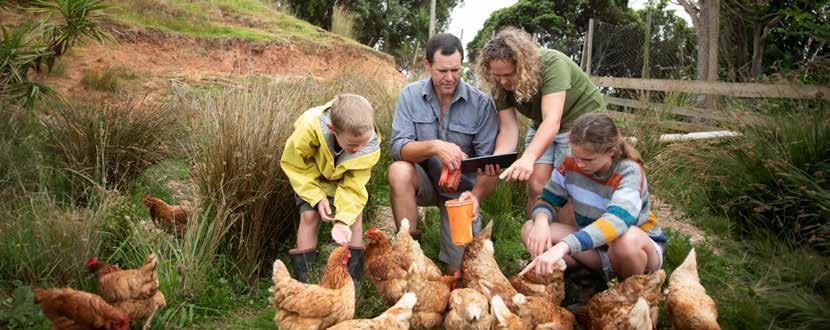




Farmlands is working hard to support our rural industries during this challenging time, not only with affordable, high-quality products but with up-to-date advice that can help you get maximum value from your land.
We know that spring is a vital time for all our farmers and growers,

and a great time to be picking up some tips to support a successful season. In this section, we profile some of the Farmlands technical experts from across the country and offer you handy how-to guides. Depending on what part of the country you’re in, this advice may be reaching you in the middle of Spring
planning, or provide useful tips late in your season.
We cover:
• Optimising lime use
• Managing pasture growth
• Managing stress in calves
• Boosting lamb vitality
• Growing beet and fodder beet
• And much more…

Undoubtedly, one of the joys of spring is seeing healthy well-fed lambs at play. Other signs of a healthy lamb are that they have a good appetite, move freely without pain or discomfort, are bright-eyed and alert with ears up, and are interactive with their world.
WORDS BY TIFFANY MENZIESFoundational to healthy, handreared lambs are preparation, consistency, paying attention to detail, maintaining good hygiene practices, having trained helpers, being observant, using all your senses and quickly nipping problems in the bud, while keeping everyone healthy and safe. Critical to good health is always ensuring lambs have access to
reachable, fresh, clean drinking water. Applying tincture iodine to wet navels prior to shed entry is recommended.
Scours or diarrhoea can be nutritional or infectious but cannot be ignored. Prompt attention is essential. Feeding electrolytes such as Reliance Blue Boost for mild nutritional scours or supportively prior to stressful events can aid lambs’ transitioning in these periods.
Typically, the parasitic disease of coccidiosis affects susceptible lambs aged one to four months old, depending on the level of threat and degree of protection given. Having the coccidiostat decoquinate in lambs’ feed prior to any risk period can aid coccidiosis prevention, or be used for treatment. It is also a safer option for the health of other animals

such as dogs or horses, should they unknowingly gain access to feed containing decoquinate, unlike other some other coccidiostats.
If hand-reared lambs are overfed, particularly aged two to four weeks old, it can favour a build-up of the bacteria species Clostridia perfringens and Sarcina in the stomach (abomasum), and lead to abomasal bloat. Other key contributing factors include poor hygiene or feeding methods, and damaged teats. Prevention is the best defence here, as effective treatment is not always possible. It is advisable to promptly consult an animal nutrition specialist or experienced lamb rearer over any lamb health concerns, or your local veterinarian for medical requirements.
Clostridia are common bacteria known for causing rapidly-fatal disease that usually targets the good-doers. However, through using a robust vaccination schedule and good vaccine products such as Multine, clostridial diseases are readily preventable. Managing worms to mitigate parasites is not only important, it is a welfare issue to continually address. Once weaned and grazing pasture, lambs ingest infective gut parasite larvae, which is why regular faecal egg count monitoring is highly recommended to help manage parasites and assess the need of a worm drench. Feeding lambs on protein and energyrich quality forage crops is also recommended to support optimal growth rates and help reduce the toll of parasite challenge.
The optimal age for castrating and tail docking is now considered to be two to four weeks. Also be sure to provide vaccination protection against the clostridial disease of tetanus, and use a fly strike treatment in risk areas.
Successful healthy lamb rearing hinges on having a good animal health plan in place and reaching out for advice from others, so you are not left suffering in silence when problems appear overwhelming. This will enable you to reap the rewards of good productive and performance outcomes.
Growth in the New Zealand sheep milking flock, allied to a commitment to give surplus ram lambs a meaningful life, is leading to increases in the number of lambs available for hand-rearing. This has to be good news in terms of lamb production in the face of a falling total national sheep flock. Rather than accidental orphans, lambs from milking sheep typically spend longer with mum to ensure good colostrum intake and may even share milk with the milking plant for a time. Increased value of surplus lambs from the commercial meat flock means opportunities for both commercial farmers and lifestylers who want to turn their expertise, land and buildings to lamb rearing.
Lessons from successful calf rearing can be applied to lamb rearing for both small-cale and commercial operations. Providing shelter or coats, especially to smaller lambs, can increase growth rates and reduce losses. Milk replacers normally offer savings over whole milk that can be sold – especially more valuable ewe’s milk. Ewe’s milk contains more fat than cow’s milk, so a milk replacer designed for lambs is preferable to cow’s milk. Coccistop® can be added to whole milk or milk replacer for the treatment and prevention of coccidiosis in lambs.
Offer a hard feed during the first week of life. Putting some hard feed in their mouths after each milk feed can help to get them used to the taste and texture of hard feed. Intakes will be very small at first but will increase as lambs get older.
Always go for a lamb-specific hard feed as it is better suited for lambs. Calf feed is often too high in copper for lambs and can cause toxicity.
Keep feed troughs clean and don’t put lots of hard feed out and leave it to go mouldy and contaminated by vermin or birds. Putting out a small amount of fresh feed every day is best.
Ensure there is enough room at hard feed troughs, so that all lambs have an equal chance.
If housed, offer some long fibre such as hay or straw, but ensure that lambs do not overconsume it as this can decrease hard feed intake and growth rates.
It is a good idea to keep a hard feed in over the weaning period and beyond to support lambs while on grass and continue coccidiosis protection.

Make sure lambs have access to clean, reachable drinking water – milk from a teat should by-pass the rumen but water from a trough is required to create a sloppy mix in the rumen.
NRM has a great range of tried and tested hard lamb feeds. They have a muesli-style starter feed, which is a molasses-based, highly palatable textured feed designed to start getting young lambs onto hard feed early in life, and then a pelleted lamb feed which is a good next stage hard feed for lambs as they get older. Head to www.nrm.co.nz
By September most dairy farmers who rely on supplementary feeds will have some straights, blends or compound feed on forward contracts, or have silage ready for use or be hoping to make more soon. Unless working to very tight budgets, the amount actually fed will be being tweaked according to need, depending how well cows came through the winter and how well pastures are growing.
Bulk feeds aside, given the tight markets I think it is worth taking a little time to consider the small stuff across all production systems.
Advice around calcium supplementation in New Zealand has tended to be confined to colostrum mobs and when feeding very lowcalcium feeds like fodder beet and maize silage. Grasses are a poorer
source of calcium than clovers. Grains and straights including palm kernel expeller and distillers’ dark grains are low in calcium. Cows will mobilise calcium in early lactation, but bone levels need to be replenished at some point or cows will subsequently be at more risk for milk fever. If feeding lowcalcium supplements – not just maize silage - to support milk production, limestone flour is an economical way to avoid relying too heavily on a high clover content in pastures.
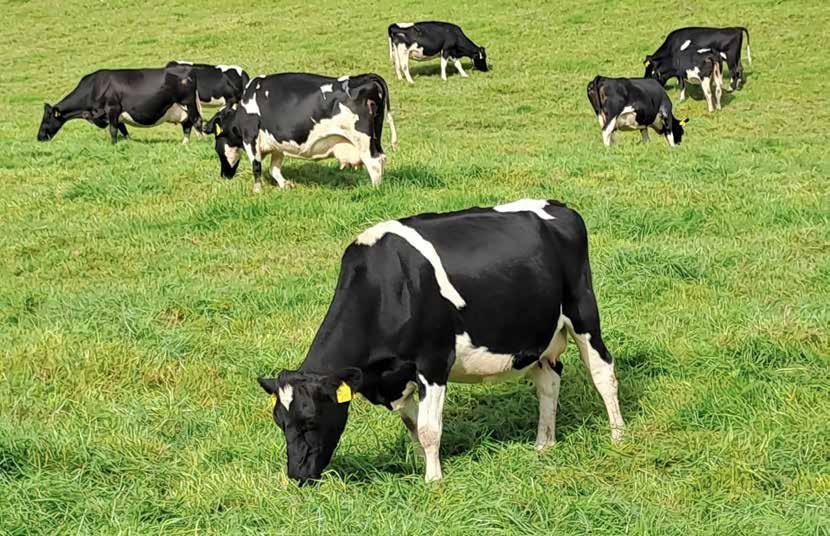
Rumen modifiers improve the efficiency of feed use and help protect cows from bloat and ketosis. In-feed options are more economical than trough treatments or boluses, so if mixer wagons, blends or compound feeds are being used the economics are much more compelling. Monensin has been listed as an inhibitor substance with regards to methane by ACVM - even if it doesn’t become a registered methane inhibitor it’s good to know it is making a difference.
For mental wellbeing we are often advised not to sweat the small stuff, but sometimes it pays to review the finer details.
The ideal magnesium level for a herd of cows at any time is difficult to calculate, because the level of magnesium in the pasture and other soluble minerals like potassium which affect uptake is so variable.
‘Magnesium staggers’ are a clear sign of deficiency, but at a subclinical level under or over-supply can be difficult to spot. Attention to detail and avoiding excesses while covering needs is going to be more important as sustainability becomes more critical. When using multiple magnesium sources, knowing the elemental magnesium level in each source – which can vary with supplier – can help avoid surprises.
Not all moulds create mycotoxins, but after such a wet season in the North Island it’s not surprising higher levels of zearalenone and deoxynivalenol are being reported in maize silage. These mycotoxins may lead to challenges with reproduction and weight gain; others are indicated by ‘jumpy’ behaviour. Screening tests have improved enormously in recent years, so the chance of identifying and quantifying the presence of key mycotoxins in suspect feeds provides a more reliable way to select an appropriate toxin binder.
Although not a label claim, ionophores are associated with reducing the risk of acidosis, so fit really well with feeding supplements rich in fermentable carbohydrates. Wet acidic silage carries a high acid load and if finely chopped may not support the rumination required to buffer the rumen, so if fed alongside starch feeding a rumen buffer like AcidBuff is worth considering.
Rumen-protected fats can be used to increase the energy density of a diet. They can be used from the start of lactation to support higher levels
Primary or Secondary test options, (secondary/ less optimum test option is shown in brackets).
Species
of milk production, but can especially help just before and through mating. Pasture species often want to become reproductive just as the mating season for dairy cows gets underway, with an increase in fibre levels and decrease in energy – which is bad timing because we want cows to be gaining weight through mating. Some types of fatty acids have a special role in conception rates over and above an effect through helping offset a weight loss. Mega-Max is a relatively new type of calcium soap without the soapy taste which contains a fatty acid profile which supports both weight gain and fertility – giving users a two-way bet on a win.
Sodium
Cattle evolved on feeds that are low in sodium, so have developed efficient absorption processes and are avid consumers of salt. Maize silage is especially low in sodium and should normally be fed with salt. Salt aids palatability of feeds. Dry matter intake and milk yield has been found to increase at sodium concentrations well above those needed to meet dietary requirements, so aiming to just prevent a deficiency feels like setting the bar too low.
Trace minerals are not normally associated with catastrophic downer cow issues associated with calcium and magnesium, but are important catalysts that make a host of bodily functions work better. Monitoring the trace element status of animals is recommended especially prior to mating, or if poor animal performance can’t be explained by more obvious reasons.
Iodine supplementation is always a topical issue pre-mating, with some products delivering well in excess of meeting expected requirements The US Food and Drug Administration have increased the maximum limit for iodine supplementation from EDDI (ethylenediamine dihydriodide) from 10mg/day to 50mg/day for milking cows, because the reduced consumption of iodised salt putting some groups with high iodine requirement (such as pregnant and nursing women) at risk of being iodine deficient. Supplementing cows with higher levels of iodine over mating than is required to prevent a deficiency could be beneficial, for both the cows and consumers of the milk products.
Ruminants can produce Vitamin A –which is important for low light vision and reproduction - from β-carotene in green forages. Stored forages have lower β -carotene levels than fresh forages and most grains and by-products are practically void in β -carotene.
The production of vitamin D3which is critical for regulating bone calcium levels - from sunlight should be adequate in grazing livestock but is less reliable the further the date is from the summer solstice and when cloud cover limits sunlight hours.
Fresh pasture is also a good source of Vitamin E – an important anti-oxidant which works with selenium - but levels are decreased by wilting and ensiling. Vitamin E levels are normally correlated to the fat content of feeds.
Your local NRM Nutrition Specialist will be happy to discuss the finer details of your dairy cow diet this spring.

Calves, like other animals, have limited coping mechanisms to deal with stress, and when they experience multiple stressors in a short period, it can lead to an overload that can affect health and performance, requiring a costly catch-up process.
Your calves have already had several stressors in their short lives:
1. Separation from the dam: removed from their familiar environment and source of early nutrition.
2. Transportation: transporting young calves, especially over long distances, can expose them to noise, vibration, temperature changes, and unfamiliar surroundings.
3. Handling and restraint: improper rough handling of calves during routine procedures like first-day handling, tagging, de-horning, or vaccinations can induce stress and fear responses.
4. Changes in diet: abrupt changes in the calf’s diet, like milk types, abrupt weaning from milk to supplements or grass.
5. Social stress: calves are social animals, so isolation or lack of social interaction with other calves can be stressful. Similarly, overcrowding or aggressive interactions with other calves is stressful. Large mob sizes are problematic for shyer, slower-growing calves.

Cumulative stress has a profound impact on performance. Stress overload in young calves can have significant negative effects on their health and wellbeing.
6. Disease and health issues: calves that are sick or experiencing health problems may be more vulnerable to stress and have reduced coping abilities. They are more at risk of exposure to gut damage and have limited ability to successfully transport energy and nutrients across the gut.
Cumulative stress from multiple sources can have a profound impact on calves compared to individual stressors. It can weaken their immune system, disrupt their digestive health, decrease weight gain, and increase susceptibility to diseases and parasites, with prolonged stress having long-term effects.
To mitigate stress overload in young calves, it is essential to provide a well-managed and low-stress environment. This includes ensuring they have proper nutrition, comfortable housing and adequate socialization, while minimising abrupt changes in routine, especially when heading into weaning.
Decreasing the milk slowly and increasing meal offered will help avoid transitioning stress. The weaning process should only start when each calf is eating 1-1.5kg (depending on size and breed) of a well-balanced calf feed for at least three consecutive days. This is the time to start decreasing milk volume, preferably over a 14-day period.
Weaning is transferring from a milk diet to a full forage/ pellet diet. Factors to consider are:
• Genetic potential
• The animal’s overall health
• Age/daily weight gain target
• Lean muscle development and skeletal height
• High volume milk programmes/overfeeders
• Rumen development- was it slow to develop?
• Supplements being offered at the right level
• Weather
• Pasture quality and quantity
Well-grown calves are more profitable when not rushed through each stage of the weaning process. Take time weighing, paying attention to detail and treating calves as individuals when making decisions. A calf that can’t compete in a group becomes off-target, time-consuming and costly in “catch-up”.
Poor growth rates will delay the timeframe of puberty in dairy heifers and profitability in beef units. Once calves are six weeks old it is important to monitor daily gains to avoid a weakened immune defence:
• <350g/day = underfed, effects of compounding stressors, barely maintaining.
• 400-600g/day = not getting enough nutrients and at risk of extra stress loading and a weakened immunity.
• >660g/day (depending on genetics) = growing to target, great rumen function, stronger immune defence.
Remember, each calf is unique, so the timing and pace of each transition may vary. Take it slow, observe their responses after each change for 14-21 days and adjust
accordingly, to ensure a successful transition from milk to a well-balanced calf feed and grass.
The same slow transition back down off the hard feed is equally important - follow the same rules as weaning from being on milk. It is also a good idea to monitor parasites, coccidia and bacteria like yersinia via faecal testing during these changes and beyond.
Cumulative losses building the perfect storm: THE
• Wet weather/cloudy days: lack of vitamin D, grass nitrates rise, grass flush causing the young calf to struggle with chlorophyll. Sped-up fermentation, lack of ability to digest feed properly.
• Open grazing: calves in a lolly store, pick all the yummy sweet grass and overwhelmed by the sugars.
• Water troughs: high, unable to reach, bitter from minerals or unclean, can limit intake, growth as less dry matter consumed.
• Slowed rumen development: calves that over-fed on milk, thinner wall and smaller rumen size.
• Transitioning from milk or meal too fast: unhappy gut microbes, change in rumen function. Each transition takes a full 21 days. Grass is the most inconsistent feed for a young pre-ruminant; if the rumen was not ready then it will struggle to be able to consume enough grass and convert to energy.
• Don’t treat calves as mobs: over-performers eating well and the under-performers getting further behind.
• Sudden weather changes/grass changes: can cause B1 deficiency.
• Don’t make decisions solely on weight; there are multiple decision-making tools for better outcomes.
• Offer plenty of room for all weaners to feed at same time; they move as a herd.
• Don't wait; remove struggling calves by eye and feed better.
• Take faecal samples regularly - test for parasites, protozoa, bacteria.
• Keep water troughs clean and reachable.
• Break fence where possible so that the calves can learn to eat everything on offer, fewer ‘lollies’ eaten and more fibre by eating the whole sward.
The first three months are all about setting up a functioning rumen, skeletal growth, and lean muscle development. Calves that had solely chosen to be milk/fibre eaters early-on will be on the back foot from now on, either from flush nitrogen-rich pastures low in fibre that are harder to convert, or as the pastures become reproductive, very fibrous with less protein and energy available, meaning some calves may start to struggle. Keep under-performing calves on a good-quality pellet well beyond weaning. It is never too late to put struggling calves back onto supplements.
Invercargill-based agronomist Trevor Todd says paddock selection, the type of crop to be grown and what inputs and what advice is needed are next on the agenda.
“Paddock selection, including soil type and location on-farm as well as soil testing, were hopefully done several months ago, with recommendations and plan already set in place to address any fertility issues as well as a plan for what is being sown and when.”
Fodder beet does not like low ph soils, so correcting this early is essential. A Farmlands TFO can give advice on the correct fodder beet cultivar for stock. “There are varieties

ranging from low dry matter grazing cultivars through to ones suitable for lifting.
“Previous crop and chemical history should also have been discussed, as both these can affect any following crop. Certain chemicals can have a detrimental effect on fodder beet,” Trevor says.
Trevor notes that multi-cropping can present issues around plant health and increase the risk of disease as well.
Spraying the paddock targeting both grass and broadleaf weeds is followed by working the paddock and incorporation of fertiliser required to establish the crop.
As winter ends, lambing and calving are underway and thoughts turn to the next few months and setting up the farm for next winter.
Hopefully this is done four to six weeks prior to the crop going in. Ideally prepare a fine, firm seed bed; this will give the best result in terms of plant establishment and weed control going forward. “Uneven and cloddy seed bed preparation is a potential recipe for disaster,” he says.
Once prepped, it’s time to sow the crop. Most fodder beet is precision-planted, giving a nice even plant count, with even row spacings and Trevor says this allows for maximum bulb development.
“Pre-emergence spraying needs to be done immediately post-sowing. This should include both herbicides to allow the crop to establish itself free of competition and an insecticide to give some early protection against insect pests such as nysius and springtail,” he says.
Over the next few weeks, regular monitoring for any issues will be undertaken by your Farmlands TFO. “They will be checking for competition from weeds as well as pressure from insects, including greasy cutworm, a pest that can

NAME: Trevor Todd
LOCATION: Invercargill
How long have you been in this agronomy role?
I started with Farmlands in January this year. Prior to that I worked as a field rep for another company for a number years in Northern Southland.
What do you enjoy most about your job?
I like being involved in trainings of the TFO workforce. They are an enthusiastic group, who have a passion for all things farming. Working with farmers; they are always challenging ways of doing things and looking to achieve the best result possible. There is always an opportunity to have a lively conversation, and this provides a chance to be continually learning and adding value.
As we wind up into spring, what has been your main focus with your clients?
Starting the process for the next season and understanding everyone’s individual aims and objectives. The better the foundation, the better the potential outcome.
What is the biggest challenge your clients face in the agriculture industry and how can you help?
Changes globally, such as costs and return on investment and the ongoing introduction of new rules and regulations and the minefield of various solutions provided. I see my role as being critical to ensuring that the right product and advice is given to aid in the on-farm decision making.
have quite a devastating effect over a relatively short time period, while weeds compete for light and nutrients and can harbour pests and viruses.”
For the best result, target these early, as larger weeds become progressively harder to kill as they grow, Trevor says. “Depending on the season, the crop may require an additional application of fertiliser. Having a plan in place is advisable.”
Once canopy closure is achieved the job is still not done.
“Regular monitoring is needed. Fungal disease can occur after this stage including mildew, rust and cercospora. These target the leaf canopy. Safeguarding against fungal infection helps drive yield while also suppressing weeds, so early applications of a recommended fungicide at the first sign of infection is vital to aid in maintaining plant health and yield,” he says.
“Another issue to consider is bolters, which are plants that go reproductive and produce a seed. The early removal of these is important, as these will grow, mature and set seed which will make growing successive beet crops impossible.”
Brigadier from RAGT is a firm favourite throughout New Zealand. With a soft bulb, it sits much higher out of the soil compared to other forms of fodder beet. Brigadier is exceptionally well-suited to in-situ grazing, particularly for young livestock. Its low dry matter percentage further enhances utilisation rates, guaranteeing higher levels of consumption.
To get the right beet for your needs, visit the RAGT website at https://ragt.nz/product/brigadier/

“Spraying the paddock targeting both grass and broadleaf weeds is followed by working the paddock and incorporation of fertiliser required to establish the crop.”
Eradicate Fall Armyworm and keep the good guys safe with Sparta™
When it comes to protecting your maize or sweetcorn crop from Fall armyworm, nothing’s more effective than Sparta.


It’s highly-selective, helping to protect the beneficials while ridding your crop of this invasive pest. It’s also safer for
the user and the environment, so you can be pest-free and confident in the choice you have made.39.
Be more
For more information talk to your Farmlands TFO today.
Agronomist Dave Schrader says replacing older, less productive pastures with brand-new grasses can take advantage of stronger genetic material.
WORDS BY ALICE SCOTTDepending on circumstances like terrain, scale, stock policy, soil fertility and grass type, Dave says the replacement policy will be managed differently. “There is no doubt that investing in more modern genetics, and potentially taking advantage of newer or different endophytes associated with grass choice, can make a difference to stock and potentially the bottom line,” he says. Generally, an older grass pasture will be replaced due to poorer performance, owing to weed ingress, pasture pest influence, or maybe even previous management practices that have led to low production levels. Often the paddock will be taken through some "break crop” such as brassicas, beet or forage cereal to take advantage of opportunities to tidy up these influences.
Crop used for summer feed gives high-quality, parasite-free bulk forage which can help avoid stock health issues over this period such as facial eczema, worms and ryegrass endophyte issues, Dave says.
Summer crop options can range from leafy turnip, summer turnip, rape (which is especially valuable in, and suited to,
summer dry areas), kale and a relatively new plant called raphnobrassica. “Raphnobrassica is a cross between kale and radish; it delivers strengths from both styles of brassica parents. It grows little stem unless left without grazing, has very strong regrowth after grazing meaning five grazings is entirely feasible and it
delivers strong tolerance to aphid pests, clubroot disease, and has a high-water use efficiency making it even better in dry conditions than rape which has been the industry standard until now.” Dave says raphnobrassica can be grazed several times and then “shut up” to regrow and be utilised for winter feed.
NAME: Dave Schrader

LOCATION: South Canterbury
How long have you been in this agronomy role? I have worked for eight-and-a-half years as an agronomist. Prior to that I spent about 18 years as a TFO.
What do you enjoy most about your job?
Working with the skilled field staff Farmlands employ and helping the less experienced field staff to upskill/improve.
As we wind up into spring, what has been your main focus with your clients? Spring pasture/crop plans, lucerne winter herbicides, arable crop monitoring.

What is the biggest challenge our clients face in the agriculture industry and how can you help?
Compliance issues - all I can do is try and improve crop and pasture yields and utilisation to ensure the resources our clients spend their money on are best utilised.
SPRING CHECKLIST
Central Canterbury Agronomist Phil Johnston says spring is a “bottleneck of busy” for his shareholder clients. Phil’s clients come from a diverse range of farming operations, from arable to cropping to pasture, and he helps work through the myriad of options that present themselves every season.
 WORDS BY ALICE SCOTT
WORDS BY ALICE SCOTT
Outside of arable farming, planting a cereal crop is a good option to rid a problem paddock of “trashy weed” before planting into a brassica crop or permanent pasture. “A cereal crop can be a good way to get a paddock back to a blank canvas. It shuts down the weed competition in the ground and limits the need for tillage.”
Getting the right spray mix is paddock preparation 101. “You have got the glyphosate and there’s a number of tank partner products we offer, depending on the weed spectrum we are trying to eliminate.” Timing of spray is also important; when there’s been enough growth to give the weed’s seed, that has been sitting dormant in the ground, a chance to strike. “Go too early and you won’t get a good enough kill.”
A second spray is also an important step in the process to give the new

NAME: Phil Johnston
LOCATION:
Central Canterbury
How long have you been in this agronomy role?
Eight-and-a-half years.
What do you enjoy most about your job?
Training new staff and seeing their development as they turn the theory into practice.
As we wind up into spring, what has been your main focus with your clients? Paddock selection and planning towards the best options, so that we can get applications right first time to avoid unnecessary expense.
What is the biggest challenge you see your clients are facing in the agriculture industry and how can you help?
Currently – cost saving and providing solutions so that the farmer can remain profitable. Long term – legislation and providing support as to what can be grown where, what class of stock can be grazed in locations and where caution needs to be considered before certain products are applied.
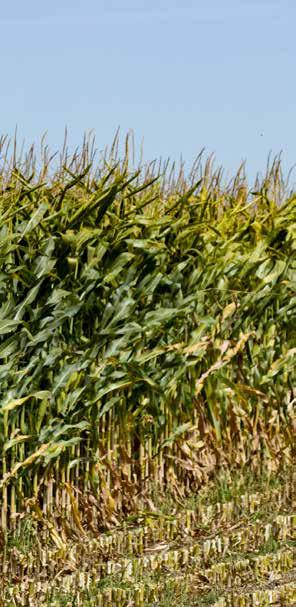
crop the best chance of success. “It’s tempting to cut corners and miss the second spray, but the result can be disastrous when all you have to show for all the effort is a very poor paddock of pasture, cereal or other crop,” he says. While there are a large portion of clients who still opt to till their paddocks before sowing, Phil says direct drilling after spraying is becoming increasingly popular. “Every operation is different and what works for one might not necessarily be the answer for another,” he says. To reduce the cost of labour and the running of machinery, direct drilling can be a cost-saving exercise.
When it comes to sowing cereal crops, Phil says the aim is to get your plant population right, so sowing rate is key: too low and you have to try and gain tillers through expensive fertiliser applications; too high and you have a crop that will grow tall and risk lodging. To get the correct sowing rate there are several factors to consider, so talk to your local agronomist for advice.
Pest control also needs to be considered at sowing time. A slug infestation can sometimes be hidden and it might mean a low rate of slug bait down the spout, if direct drilling with disk-style drills.
“Coming out of a wet winter, slugs will be the number-one issue. They can live in the long grass in fence lines and hedge rows through the winter and it is a good idea to put slug traps out. Direct drill can be a harder fix as they can live under the trash throughout the whole paddock. I have seen a slug infestation where a whole paddock was wiped out before the seedlings even had a chance to reach the surface. We often pull open the rows and find a highway of slugs underneath.”
Nysius and aphid can also destroy young pastures and cereal cropstreated seed can help and spraying insecticides might also be necessary at an early stage. “But the best advice is to continually monitor your crops and identify what insects are present,” he says.
Seeds sown with phosphate fertiliser in close proximity establish with vigour and are more likely to meet their yield potential.
Phosphorus (P) is one of the most critical nutrients for early plant development, the other being nitrogen (N). Phosphorus is important for early root and shoot development. Being relatively immobile in the soil, to support early seedling growth, phosphorus should be placed near the seed.
Starter fertiliser placed in close proximity to the seed provides the P for early root development and growth. Seedlings can access these nutrients much more easily than if fertiliser is broadcast on the soil surface.
Research commissioned by Ballance Agri-Nutrients has shown the yield benefits in brassicas by placing P close to seed1. Compared to broadcasting, P drilled with the seed increased yield by almost 3.5 t DM/ha. Broadcasted P, however, was better than no P at all, and increased yield by almost 2 t DM/ha compared to the

control, and by approximately 3 t DM/ha when it was incorporated into the soil. Placing P under the soil near to the seed also reduces risk of loss by overland water flow.
When drilling starter fertilisers like Cropzeal Boron Boost (for brassicas and fodder beet), high concentrations of N and P - nutrients that are critical for a good start - are in the best position for the germinating seed to benefit.
For fodder beet and shallow-rooted brassicas such as turnips and swedes, Cropzeal Boron Boost is ideal. These crops all require boron, and Cropzeal Boron Boost can be drilled next to the seed with relative safety at rates up to 150 kg/ha without harming the seed. It can also be broadcast at higher rates.
The compound fertiliser YaraMila Actyva S is ideal for cereals. It is easy to drill, with smooth, free-flowing granules. It also spreads well, up to 32m bout widths on well-calibrated spreaders.
As compound fertilisers, both Cropzeal Boron Boost and YaraMila Actyva S have a specific ratio of nutrients in each granule, providing nutrients evenly, promoting even growth and reduced risk of seed damage.
As the soil is not disturbed with no-tillage cropping, drilling starter fertiliser is critical to make up for the lack of soil mineralisation. In cultivated soil, starter fertiliser enhances seedling establishment because cultivation often brings low fertility subsoil to the surface where small seeded crops are.
Adjuvants are added to insecticide, fungicide and herbicide sprays to enhance safe, efficient application and performance of these crop protection products.
They are usually categorised by their type of function and include crop oils, markers, penetrants, surfactants, de-foaming agents and drift retardants.
As Nufarm technical specialist Andy Davis explains, spray adjuvants themselves are not active in controlling or killing pests, disease or weeds, but instead are designed for enhanced efficacy. “They modify some property of the spray solution, such as spreading, sticking, penetration, droplet size, handling characteristics or visual appearance.
“This in turn improves the ability of the active ingredient to land on target, cover the target area more effectively and/or be absorbed by plant tissue more quickly, as well as being easier to identify after application, or mixing better in the spray tank.”
A key benefit for certain adjuvants in spring, when weather conditions can be very unpredictable, is their ability to enhance drying time and rainfastness.
Also in spring, New Zealand ryegrass develops a waxy outer cuticle which protects the leaf tissue from chemicals being applied to it.
“Take the very common scenario of spraying out old pasture to prepare for sowing spring crop or new pasture. If you sprayed glyphosate in spring without the right adjuvant, the waxy cuticle acts as a barrier between the glyphosate molecule and the inside of the ryegrass leaf, compromising your result.”
So how do you know which adjuvant is best for your requirements?
This season, there’s a range of adjuvants available exclusively from Farmlands to make it easier to pick the right additive for every application.
Spraywise comprises several different adjuvants from Nufarm, with plenty of supporting information available regarding correct product selection, use rates and compatibility.
Included in the range is a drift reduction agent called Amigo ®, along with known brands such as Pulse ® Penetrant, Bonza® Gold adjuvant oil, and Contact™ Xcel spreader.

Also available are Flume ® Super Spreader, Tank and Equipment Cleaner, Foam Wrecker anti-foam agent, and Foam Marker.
Andy says all adjuvants in the Spraywise range have been selected
to support Farmlands shareholders with proven and tested formulations.
Pulse Penetrant, for example, is specifically formulated to mix with CRUCIAL glyphosate. It reduces the surface tension of the glyphosate spray droplet, so it spreads over a greater surface area, penetrating the waxy cuticle and ensuring rapid rainfastness.
For further information, contact your Farmlands Technical Advisor or the friendly team at your local Farmlands store.
Article supplied by Nufarm. ®Amigo, Flume are registered trademarks of Nufarm Australia Limited. ®Bonza is a registered trademark of Nufarm Limited.
®Pulse is a registered trademark of Nufarm Technologies USA Pty Limited. ™Contact is a registered trademark of Nufarm Limited.

Palmerston North agronomist Shane Brownlie says lime increases soil pH, which leads to enhanced clover growth.
 WORDS BY ALICE SCOTT
WORDS BY ALICE SCOTT
Increasing clover growth improves soil fertility through greater nitrogen fixation, leading to a stronger uptake in desirable grasses like ryegrass. “The result is an improvement in pasture composition, and the pasture becomes more vigorous, more nutritious, and more palatable to stock,” he says.
On most pasture soils, the ideal pH for pasture growth is between 5.8 and 6.2, assuming all nutrients are in adequate supply, he says.
“The main action of lime is to raise the pH of the soil, making it less acid. A pH of 7 is neutral, a lower pH is acid, and a higher one alkaline. Most soils are acid, with a pH of 6.5 or less.”
Raising the soil pH with lime reduces the solubility of A1 and manganese compounds, both of which can be toxic to plants. “As pH rises, bacteria and other soil microbes are activated, accelerating soil organic matter breakdown, and increasing the availability of nitrogen, sulphur and phosphorus. Lime promotes earthworm activity in cycling organic matter and improving soil physical properties.”
Shane says lime does not seem to affect animal production and health,
except by improving pasture yield and composition. However, good grazing management “such as high stocking rates and pasture utilization and preventing pastures from going to seed”, helps achieve the best results from applying lime.
As a general guide depending on stocking rate, maintaining optimum
pasture pH between 5.8 and 6.2 means an annual lime application is needed at a rate of 350-500kg/ha for dairy, 250-400kg/ha for dairy support and 100-300kg/ha for dry stock.
Farmlands has card partners who supply lime throughout the country. To find your local card partner just scan the QR code above.

NAME: Shane Brownlie
LOCATION: Palmerston North
How long have you been in this agronomy role?
Five months.
What do you enjoy most about your job?
Working with the TFOs and seeing their progression.
As we move into spring, what has been your main focus with your clients?
Going through all available cropping programmes to come up with the most cost-effective option while still achieving the best possible results.
What is the biggest challenge your clients are facing in the agriculture industry and how can you help?
Environmental regulations. I’ve completed the ‘Intermediate and Advanced Sustainable Nutrient Management Programmes’ through Massey University and can help them with the latest changes.
This year, after three years of trials, phosphate is being added to the swede pellet. Benefits of adding phosphate to the pellet have been verified by numerous on-farm trials demonstrating an average 7% increase in yields, equivalent to an extra 1,000kgDM/ha, when compared to non-phosphate pelletised seed. While the phosphate in the pellet does not replace the need for phosphate in starter fertiliser, it’s the minute amount of phosphate close to the seed that provides the early boost in yield.
Ultrastrike ® pelleted swede seed is available in four cultivars: Cleancrop™ Hawkestone, Clutha Gold, Earnslaw and Major Plus.
In 2016, after recognising an opportunity to precision-sow swedes, PGG Wrightson Seeds developed Ultrastrike ® pelletised swede seed, a smart technology which applies a Splitkote™ pelleted seed treatment to the seed so it can be evenly planted through a precision drill at a recommended rate of 90,000 seeds per hectare. Pelletising allows
precision placement of swede seed, at the optimal number of plants per hectare which in turn maximises individual plant size and crop yield. Farmers using the technology have been observing 3-4tDM/ha increases in yields compared with conventional sowing methods and scientific trials have shown an increase of at least 12% in total dry matter yield.
The perfect pairing for precision-sown swedes is the use of the Cleancrop™ Brassica System technology with Hawkestone swede. The Cleancrop™ Brassica System combines the power of broad-spectrum herbicide Telar ® and specific brassica cultivars bred to resist it, enabling farmers to control 23 weeds at the time of sowing – including several very difficult-to-control weeds such as wild turnip and shepherd’s purse. Controlling weeds from the start eliminates competition for moisture and nutrients, which is particularly important for precision-sown crops due to the number of seeds planted per hectare.
Best of all, Cleancrop™ extends to other brassica species, including leafy turnip, Toto summer turnip, a summer and winter bulb turnip, forage rape, and Firefly (intermediate) kale and the new Sarge (short) kale, meaning there is an option for every feed situation.
When looking for extra yield from your brassica crops this spring, ask your local Farmlands Technical Field Officer how the Cleancrop™ Brassica System and Ultrastrike® pelletised swede seed may add value to your farm system.

The humble swede, enhanced with some innovative technology from PGG Wrightson Seeds, is delivering impressive yield results for New Zealand farmers.
As we move into spring, it is essential to implement “best practice” to optimise pasture growth, maintain soil health and provide adequate nutrition for grazing animals. According to new Farmlands Head of Agronomy – Technical Field Growth, Elena Duter, pasture management is largely about observation. “It is an art as well as a science!”
Elena says assessing pasture conditions is important, particularly after the recent weather events experienced in various areas of the country. “Annual or biannual soil testing is a cost-effective way to help optimise pH levels and nutrient status, by showing where you need to apply additives like lime or fertilisers,” she says.
“Once the areas that need reseeding and/or renovation have been identified, choosing the right species can be a game-changer. Now is the time to get the best combination for yield, quality and persistence on-farm and reap the return from your investment.”
Elena recommends thinking about localised areas where the soil conditions have changed, or where there’s vulnerability to extreme changes. She says good weed control management is vital, and notes that as soils get warmer, pest and disease control will also become a key part of the mix.

Grazing pressure or intensity management allows farmers control over the speed of their rotation, therefore controlling the speed of weight gain. “‘Not too short, but not too long’ - these decisions need to be aligned with the entire farm system and factors such as the market situation and the weather.”
Elena advises making sure you have the correct species for the type of soils that you are dealing with, and record how soils respond to weather events. “Water-logged areas may require a different use plan to preserve the soils and
avoid adding unprofitable inputs. During dry periods, forage species with tap roots or longer root systems can explore deeper depths in the soil profile, allowing the extraction of nutrients and water from less-crowded areas.”
What you sow will determine the persistence of permanent pastures, even during years with unexpected weather events, she says. “Be mindful of plant recovery after grazing, using what l call the ‘three P’ system: prevent overgrazing, promote even forage utilisation, and periodically adjust management practices accordingly.”
Regularly monitoring pasture growth, forage quality and animal performance will help to prevent surprises, Elena says. “Keep records of grazing patterns, pasture utilisation, and any observed issues. Good data collection produces good data outputs and a great tool for decision making. Finally, ensure clean, functional, and easily accessible water supply for livestock throughout the grazing season.”
Farmlands recommends you stay updated with the latest research and best practices in pasture management. Talk to us if you need any assistance.
NAME: Maria Elena (Elena) Duter LOCATION: Canterbury
For more on Elena and what she brings to Farmlands, check out the Clippings section on page 12.
Pasture management is crucial for the health and productivity of livestock, and the profitability of your farm. During challenging financial times, it is more important than ever.
BY ALICE SCOTT


There’s only one chance to prepare paddocks properly for summer crops or new grass, so this first step in the spring sowing process is arguably one of the most CRUCIAL.
Shortcuts here aren’t always a good thing when it comes to getting a great result. But what if there was a shortcut that helped you do a better job?
Use the right glyphosate to prepare paddocks this season, and you’ll enjoy a shortcut that fast-tracks your other tasks, adds flexibility to your programme and/or gives you a few more opportunities with grazing.
That’s because paddocks sprayed with CRUCIAL® (Group 9) can be grazed, cultivated or drilled just one day after treatment for annual weeds, and three days for perennial weeds.
That’s two to four days sooner than some other glyphosate formulations,
so you get crops and new grass established quicker with less downtime. Move onto other jobs sooner, knowing that if for some reason your plans change, you have extra leeway.
Getting the fastest possible turnaround at spring sowing is a great way to farm smarter, not harder, on a tight schedule. CRUCIAL helps achieve this another way. When applied as recommended with Pulse Penetrant, it carries a commercial performance guarantee of 15-minute rainfastness.
That sets a new benchmark in terms of flexibility and knowing the job is done properly even when conditions are unpredictable and challenging.
A fast, reliable kill at the outset helps ensure a good outcome, especially if you use minimum tillage or direct drilling to reduce soil disturbance.
Special offer: Purchase a 15L or 20L drum of CRUCIAL and receive 1L CRUCIAL for free*! Hurry - instore now.
For more detail talk to your local Farmlands Technical Advisor or visit your local Farmlands store.
Article supplied by Nufarm. ®CRUCIAL is a registered trademark of Nufarm Australia Limited

Good land drainage is well-understood by the farming community as a must for maximising production potential.
Its benefits are significant and numerous; from improving pasture and crop yields, to minimising pugging damage, maximising the effectiveness of fertiliser and herbicide application, developing soil structure and improving access around the farm. So, what’s involved in planning and installing an effective land drainage system?

Kevin Griffiths, of well-known Waikato land drainage company Griffiths 2000 Ltd, says “First and foremost, seek professional advice. Your local land drainage contractor knows your soils, has the specialised machinery required and the knowledge to design an effective system. Land drainage is a major farm infrastructure spend, so get it right the first time.”
Things to consider are: volume of water to be removed from the soil profile given the farming type, system design including type and diameter of pipe (Nexus smooth-bore
PE pipe or Novaflo corrugated-bore pipe) allowing for the property’s topography, pipe gradient as determined by laser measurement/ installation and the use of moledrains. “Once installed, don’t just forget about the system, get a Farmtrac as-built map and have a regular planned maintenance schedule, including jetting of the lines.”
Bringing in new areas of farmable land, extending the grazing season on wet blocks, and improving soil structure and crop vitality, will deliver productivity gains well worth the capital investment on land drainage.
Farmlands stocks a wide range of land drainage pipes, including farm culverts. Ask us about the free Farmtrac asbuilt mapping of new installations*. *Terms
With unprecedented levels of fence repair being undertaken across the country, Phil Cornelius, President of Fencing Contractors Association NZ (“FCANZ’), the industry body for fencing contractors, shares his tips for finding a great contractor.

Many fencing contractors offer a huge diversity of services from rural and farm fencing through to residential, security, civil and roading works. Some even construct retaining walls, viticulture and horticultural structures and orchard developments.
Be cautious of being tempted by a cheaper price or “immediate availability” to carry out work. Engaging a contractor you have used before, or who has done a great job for an acquaintance, is a good option, or consult the FCANZ website.
“Skilled fencers are in demand. Always look for a fencing contractor who has a proven work record. If you don’t know them, ask to speak with some of their previous customers. Choosing the right fencing contractor for the job, whether rural or residential, should never be just about price,” Phil says.
The top seven things to look for when considering a fencing contractor are:
• Experience - a proven work record in the type of fencing required
• References – a willingness to put you in touch with previous customers
• Tools of trade – the right tools for the job
• Materials – choice of good-quality materials that are right for the job
• Availability – there will be a wait for most quality fencing contractors
• Longevity – their business has been around for a few years
• Professionalism - a written quote or estimate is provided.
A proudly 100% New Zealand owned and operated family business based in Oamaru, North Otago, Milligans Feeds is one of New Zealand’s leading suppliers of animal nutrition products. Having over 30 years’ experience in producing high quality, top performing milk replacers, Milligans Feeds have been the choice for generations.



With a growing range of milk replacers and animal health supplement products, Milligans has you covered!




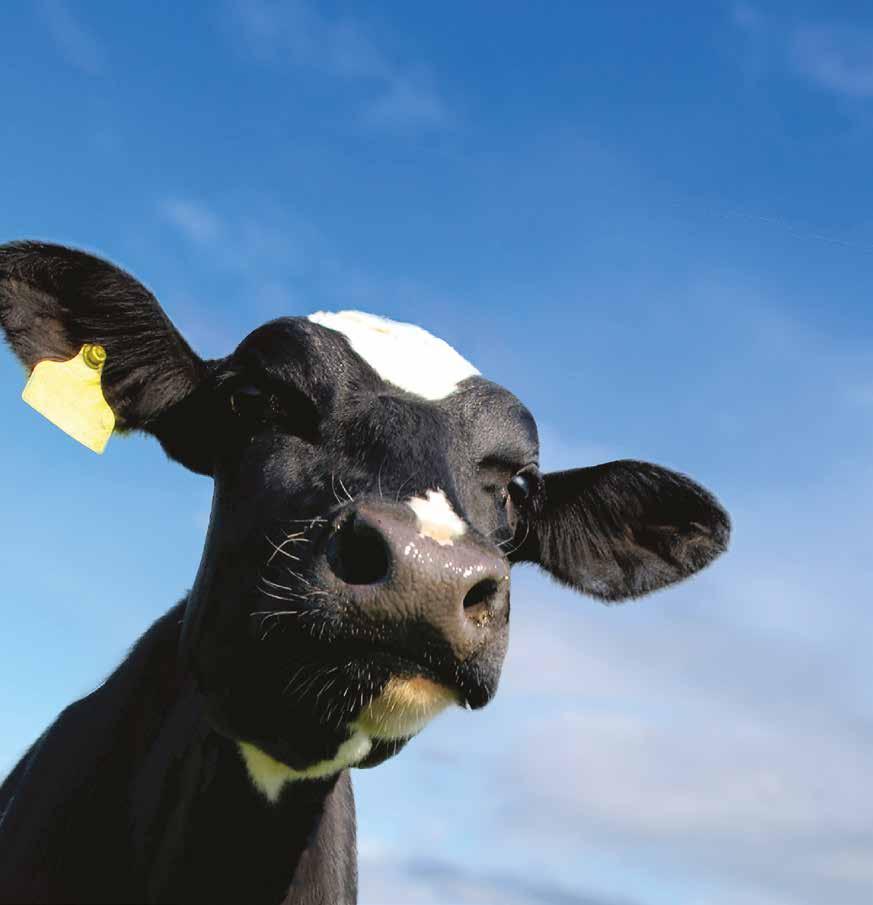
Available nationwide from Farmlands stores - Check out www.milligansfeeds.co.nz for more information.

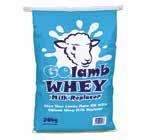
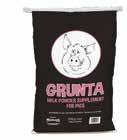

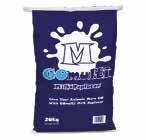



Expert advice on topics across farming disciplines to help you have a successful season, whatever your field.
Intelligence
78 Go behind the scenes and learn how new technology is reshaping the beekeeping industry in New Zealand.

84 Advice on managing Gen Z workers, from a dairy farmer-turned people management specialist.
96 Dr Jacqueline Rowarth lays out an agenda for bringing hope back to the rural sector.
How sweet it is to be a honey lover in New Zealand. Thanks to this country’s stunningly rich biodiversity, unique climate zones and clean environment, ‘Godzone’ is known around the world for its firstclass honey production capabilities.
But the honey industry is highly dynamic and ever evolving, both in terms of the myriad challenges beekeepers and honey producers face, and the powerful new tools being deployed to meet those challenges.

It’s also an industry that’s heavily affected by climate. Bee colonies are very sensitive to temperature changes, humidity and rainfall patterns, and one bumper year can easily be followed by a rotten one, so every season is an exercise in making honey while the sun shines.
“It’s all about having your hives at good strength when there's nectar flow,” says Arataki Honey manager Rhys Flack. “Nice runs of hot weather over summer will yield abundant flowering and the bees will keep working – night and day, virtually – if there is that nectar flow available.”
“But when we're not getting that prolonged period of good weather, the bees might harvest for one or two days, and then be inside the hive for another two. Wet or cold weather for extended periods is just not sufficient to produce that nectar flow excess we can harvest.”
“The priority is always to keep your hives as healthy and alive as possible so we can get through to the next year when maybe things improve.”
That forward thinking has worked for Arataki Honey so far - the company will be celebrating its 80th
anniversary next year. A household name in New Zealand, and a successful, vertically-integrated family business, Arataki Honey produces a wide range of honey products for the local and international market, including Mānuka honey - famous for its unique antibacterial properties and health benefits.
With hives and processing sites spread across the country, centralised access to timely, reliable operational data is crucial for decision-making at Arataki’s head office in Havelock North.
“It’s so important to be able to access accurate information quickly, so that’s where technology comes in,” says Flack. “We need to be able to make decisions quickly and we need to know where to focus our energies and resources.”
The buzz on high-tech apiculture: we look at how innovation is changing the way Kiwi beekeepers operate.
Enter the BeeApp, a New Zealandbuilt SaaS (software as a service) tool designed to help commercial beekeepers, honey producers and queen breeders optimise their operations across the whole honey value chain.

Providing “precision apiculture from hive to jar”, BeeApp brings modern data and intelligence capabilities to the unpredictable business of beekeeping, letting users manage their hives and sites, select the best queen bees, track boxes, supervise honey inventory, view lab results, and manage complex compliance obligations and more.
With modules across queen rearing, beekeeping, extraction and blending, and inventory and warehouse, BeeApp covers the entire value chain of a beekeeper.
“Before we had BeeApp, every beekeeper had their own manual book in which they wrote down what they did today and what they were going to do tomorrow,” says Flack.
“But for overall management, we need that information in one central place where we can quickly see where
we’re at, because we're operating 10,000 hives just here in Hawkes Bay and we’ve got 15 beekeepers out on the road, so there are a lot of moving parts.”
“We need to make sure the hives have feed on them, we need to know if someone is behind on getting certain tasks done, or if we should put resources into a particular area.”
Now into its second season using BeeApp, easy access to key operational data from across the business means that Arataki Honey HQ can quickly get an overview of operations at any time.
“We can look up where a particular beekeeper is at with their varroa treatments for example, we can see how many strips they’ve put in, how many boxes of honey they’ve got, what
was the last run of production that they took off their on-average yield, what type of honey was collected and more.”
“All that key information is recorded on every visit and that’s the key point we want to know, because it helps us determine the strength of the hive. How is the queen's laying? How many frames of bees are there? Are there enough bees there to keep the queen sustained through winter?”
“With BeeApp, all that key information is compiled and easily accessible, it’s available to us instantly, and that's what we need to make better decisions, operate more efficiently and keep costs down.”
The ability to quickly access accurate and up-to-date information was at the heart of Arataki Honey’s deft management of February’s Cyclone Gabrielle.
“Here in Hawkes Bay we lost about 480 hives - about five percent of what we have here,” says Flack. “But working through BeeApp, even by the next day we already knew where we were at. We had an accurate snapshot of the situation, we knew where we needed to put the work in, and where we needed to pool resources.”
From major weather events to sudden swings in the market, the apiculture industry is nothing if not volatile. International demand for mānuka honey – driven by the products’ unique health benefits – has soared in recent years. Produced only in New Zealand and parts of southeastern Australia, international demand has seen strict authenticity and quality regulations put in place in New Zealand (as well a trans-Tasman battle over the mānuka honey trademark).
From major weather events to sudden swings in the market, the apiculture industry is nothing if not volatile. International demand for mānuka honey – driven by the products’ unique health benefits – has soared in recent years.
Certification is done by way of the MPI mānuka standard - tests for four nectar chemicals and one DNA marker from mānuka pollen - which are administered by third-party certified laboratories.
“The honey industry is a compliance-heavy industry - and has become even more so over the last decade,” says Dale De Luca, cofounder and director of Bee Intelligence.
“For beekeepers, those obligations can be really quite onerous, especially when it comes to processing honey for export, so BeeApp digitises that process enabling seamless audits and full traceability – from hive to the jar.”
For BeeApp users looking to export mānuka honey, those MPI mānuka standard test results can be automatically associated with the correct batch in-app, providing end-to-end traceability of a honey product in a digital
form, reducing regulatory compliance costs to create a marketable product.
“There’s no manual paperwork and no sticky pieces of paper required,” says De Luca. “All the processing and tracking of the honey to its destination, and all of those data lab and test results are all recorded in-app and automated.”
“BeeApp really does make a big difference to the lives of beekeepers. Even the honey auditors love what we do, because it makes their jobs easy too.”
And with many smaller Kiwi honey producers currently exiting the market because of increased costs and lack of ability to move their product, efficiency of operations is crucial for those hoping to thrive in the international market.
“The industry has been through a bit of a boom/bust cycle,” says Flack, “driven by the high return people were getting from mānuka honey.”
Indeed, with mānuka honey prices topping $20 per kg, a rush of new beekeepers entered the industry in a short time, disrupting production levels and causing widespread ripples in pricing.
“New Zealand went from about 300,000 hives, up to nearly a million,” says Flack. “But I think some of those new entrants were surprised to find that with beekeeping, not every year is a good year, so the numbers have been trending down, probably back to a more sustainable level for the market. We were in an overproduction situation with honey getting stored and not sold and that's not good for pricing.”
Add a myriad of other challengesincreasing costs, labour shortages, as well as the constant need to tread with a lighter environmental footprint - and it’s a challenging environment for honey producers needing to stay profitable.
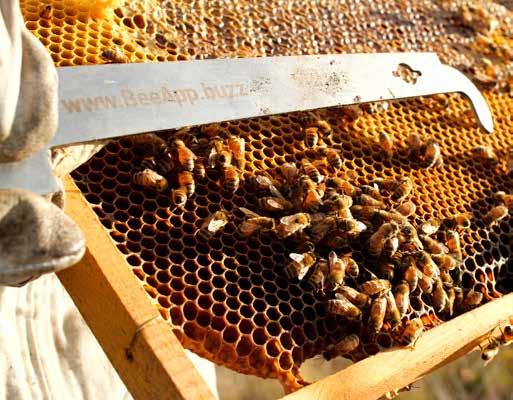
"If prices are low you've got to be pretty sharp just to get a profit at the end of the year,” says Flack. “A lot of things have got to go right for you, so this is where BeeApp has helped us reduce those costs. Being as efficient as possible is the only way we're going to stay in business.”
If Arataki Honey is any example to go by, the future of the honey industry in New Zealand may belong to those who can leverage the technology the best.
“New Zealanders have always been very good at picking up new things and new practices and adopting technology as a tool to make things better,” says De Luca.
“If you look at the overseas markets, particularly the US, they're going through a profound intergenerational change right now, where sons and daughters are picking up the business from their parents or their grandparents and they're demanding applications to make things easier.”
“In New Zealand that's been happening for a while. We’re lucky in this country - we’ve got some really forwardthinking companies in the industry.”
“Even those companies that have been around for a long time, they’re embracing the technology, and because of that they're surviving and thriving.”
“New Zealanders have always been very good at picking up new things and new practices and adopting technology as a tool to make things better.”
The brand-new Can-Am Outlander line-up has arrived in New Zealand. This next generation of utility ATVs has been built with the Kiwi farmer in mind, delivering an improved rider experience whatever the work day brings. The new Outlander line-up offers more performance, comfort, storage and reliability for the category, all while being very competitively priced.
to gather insight and local input from farmers, service centres and dealerships to ensure that the update was built from the rider down. Our focus was on delivering the highest standards of quality, reliability and durability in order to get the job done day in, day out on the farm.
New additions such as a speed limiter, ideal for spraying and constant speed work, 75 LinQ storage options, and improved suspension make for a better experience while getting the daily jobs done. Yet the biggest improvement on the new Can-Am Outlander PRO line-up is the array of features that make cost of ownership significantly lower: easy-access maintenance components, revamped
build to make jet washing and dayto-day maintenance a breeze, and bolted, rather than riveted, panels.


Can-Am ATVs have always helped riders get out and do more, especially out on the farm. Can-Am brand ambassador Sir David Fagan says, “The new features on the Outlander PRO would be great for any farm in the world.”

“The Can-Am ATV team intently focused on delivering an ATV line-up that improves the lifetime value of ownership, and less farming down time, through signature features such as easy access for maintenance on key components like the airbox, engine, CVT, oil, battery and more,” says Sam Strutt, Senior Brand Lead for Can-Am, APAC.
For the New Zealand farmer, the new Can-Am Outlander PRO is a revolutionary development. It comes with a range of updates and improvements that are vastly different from any other ATV on the local market. This development journey began on our shores over five years ago, when the Can-Am Global ATV product team visited New Zealand Contact
The new Can-Am Outlander PRO range ticks all the boxes for the New Zealand farmer. See what all the fuss is about and book a test drive with your local dealer today.
The new Can-Am Outlander 700 and Outlander PRO HD7 & HD5 deliver recreational and utility riders unmatched value—and they are here on New Zealand shores.

Breeding and rearing chicks can be immensely rewarding and a great way to introduce younger members of a family to animal husbandry skills. There is a difference between:
• hybrid commercial birds – the result of very carefully bred male and female lines to deliver particular genetic traits, especially in terms of egg or meat production

• heritage breeds often bred by enthusiasts to a breed standard
• farmyard birds produced from cross-breeding two distinct breeds, which may benefit from some hybrid vigour but with far more variable traits and appearance.
With the increased demand for laying birds, there is a good chance that surplus well-reared birds will be easy to sell locally.
Day-old chicks from a hatchery may have the added benefit of being vaccinated against Marek’s Disease and get their first dose against
Salmonella Typhimurium. Subsequent salmonella booster vaccinations can be given at 2 weeks of age and a 3rd dose at 16 weeks, which could be important for commercial free-range flocks. Vaccines normally come in large doses per pack and may be prohibitive for smaller numbers. Having good management and biosecurity practices can reduce the risk to isolated flocks. Although difficult, some control of wild birds and vermin is recommended, as they can transmit salmonella and other diseases.
If eggs are collected from your own birds for hatching, ensure a wellmineralised, high-protein layer feed is being used. NRM declare protein on an as-fed basis, which is more common in monogastric feeds but some manufacturers declare protein
on a dry matter basis – 16.5 percent as fed typically equates to about 18.8 percent on a dry matter basis. A clean nest box helps avoid bacteria, which can proliferate during incubation and kill developing embryos. Prior to incubation, store eggs on their side or pointed end facing downwards and turn or twist them twice daily. Keep eggs in cool (between 5°C to 10°C so not in the fridge), but not too dry conditions and incubate them as soon as possible to increase hatching rates. Humidity during incubation is just as important as temperature, as it can affect hatchability.
Chicks need to be kept warm and dry but feeding couldn’t be simpler – a good quality chick starter and clean drinking water will provide everything required. Obesity is not something to worry about with young birds – ad-lib feeding from clean feeders is recommended.
Coccidiosis is a real threat to chicks and can be spread by vermin and birds – especially as they start venturing out of the broody box. The coccidiostat Rumensin in NRM Chick Starter Crumble is a good way to protect chicks, but should be kept away from laying birds. Typically, chicks will have developed immunity to coccidiosis by six to eight weeks of age and can move to NRM Pullet Grower Pellets before transitioning to a layer feed, which is richer in calcium, as they start laying.
Raising chickens in the backyard is quickly becoming a national pastime. Here are some quick tips for getting started.

For many farmers, ‘human resources’ is spelled ‘headache’. We spoke to Southland-based farmer and people advisor Fleur Worker about how to tackle employment issues in the Gen Z era.
 WORDS BY NIKO KLOETEN BAILEE REUBEN
WORDS BY NIKO KLOETEN BAILEE REUBEN
“If you don’t genuinely care, then start pretending to.” That’s one of Fleur’s ‘golden rules’ for farmers who want to be employers of choice in an era of labour shortages, changing attitudes to work, and the rise of a generation that grew up on social media. Super-long hours are out, ‘purpose’ is in, and one Tik Tok video by a disgruntled former employee could give you a radioactive reputation among potential workers for years.
Sound scary? Well, running the people side of a farming business has never been easy. Fleur, who began her own employment services consultancy Team Made in late 2021, knows this better than almost anybody. A “born and bred” dairy farmer, she lived in the Bay of Plenty until her family moved to Southland when she was nine years old. “I learned to walk in a cowshed, like most dairy farm kids, but I’ve been employing people myself on the dairy farm for many years, so I guess that’s where the interest in teams came.”
Fleur stayed in Southland and currently lives in Mossburn, where she and her partner Jason are lower-order sharemilkers on a 390ha dairy farm with 1000 head of cattle. They have five primary-aged children between them. “I don’t milk the cows, but we have a great team that do a great job of that and enjoy it. I’ve done my time in the cowshed in the early days before having kids.”
Fleur has more than a decade’s experience being involved with managing farms, starting in her mid 20s. “We had fairly big farms, big teams. When my youngest was about two I decided I needed to ‘talk adult’ again and do something off-farm, because my life was just absorbed with farming and kids.”
Her desire for life outside the farm saw her take a job working for a nationwide immigration law and recruitment business, looking after the Southland and Southwest Otago region. In this role she looked after dairy farm employers who had mainly Filipino and Nepalese migrants on their farms. “I did that for three years
and by that point all my kids were at school, and I decided I didn’t want to work for the big business anymore, I wanted to do my own thing.”
After taking a year off, Fleur set up Team Made, which allows her to work from home. She relishes the flexibility, particularly when it comes to looking after the kids. “It’s really lovely to be able to work around the kids and the farm and have my own thing but still be able to be flexible and manage my workload, and to be able to switch off at three o’clock,” she says.
Team Made was set up to focus on “everything people-related”, such as performance, leadership development, team bonding and house inspections, as well as recruitment. “It’s something a lot of farmers struggle with,” Fleur says. “They say they love the farming, but they hate dealing with the people
do all the Visa work. “We work quite closely together. She’s also a dairy farmer with four kids and three farms and she does this business on the side. She’s also a friend of mine, so it’s been really cool to partner with her.”
The Nepalese workers come with experience from Saudi Arabia, where dairy farming looks very different. The giant factory dairy farms have tens of thousands of cows, housed indoors and eating grain-based feed. “It’s different to here because they don’t grass-based farm in Saudi Arabia because it’s a desert,” Fleur says. “But they’re still cows and they still get milked, and they still have babies, they just eat a different type of food, and they don’t live outside like they do here.”
Helping the new arrivals settle in New Zealand is one of the most rewarding parts of her business, she

side of it. In my previous role I was too busy to focus on that stuff, which was really about getting things humming and developing those strong teams.”
A big focus for Team Made is recruitment, which Fleur says is a much-needed service in dairy, particularly in the Otago and Southland regions which are crying out for more workers in many sectors. She provides offshore recruitment services, bringing in workers from Nepal, with the help of a licenced immigration advisor she contracts to
says. “I love bringing Nepalese guys here with their families to make a life here in New Zealand, because it’s a dream come true for them. It’s always really satisfying picking them up from the airport and seeing how excited they are to be here and to call New Zealand home.”
Although she enjoys this aspect of her role, Fleur admits she is worried about the lack of young Kiwi farm workers coming through. “I am a born and bred Kiwi dairy farmer and my family are all involved in farms, and it
concerns me that the Kiwis aren’t there coming through for the next generation to be buying and taking over these farms when that generation steps out.”

More needs to be done through the schools, because there are a lot of ‘towny kids’ who could be wonderful dairy farmers, Fleur says. “Just because they didn’t grow up on a dairy farm doesn’t mean they can’t come and absorb themselves in it. How many jobs can you go into with no experience and no qualifications, and by your early to mid-20s you could be running your own business? There aren’t many.”
Despite dealing almost exclusively with dairy farmers, Fleur says she is surrounded by lots of people in other agricultural sectors such as sheep, kiwifruit and “they’re all having the same conversations” about trying to find staff. “It’s not a pay thing because I feel like dairy farmers get paid well, so it’s the whole picture. Also, we have houses provided on farm whereas other industries don’t, so it’s quite different.”
One of the biggest challenges facing farmers on the employment front is navigating the wants and needs of ‘Generation Z’, the cohort born between 1997 and 2013. Getting them to work on the farm is one thing; keeping them there, and keeping them happy, is quite another. Fleur says the generation that’s coming through has a “totally different mindset” regarding work, compared not only to the Baby Boomers, but Gen X and even millennials like herself.
“I’ve been doing lots of reading and listening to lots of podcasts to better equip myself to have those conversations, because we’re an employer and we’re employing people too, and being aware of what the difference is. I’m only in my mid-thirties, so we’re not our parents’ generation, where there was a lot more loyalty, they worked hard, they didn’t want so much, so we’re kind of on the fence,” she says.
“We can understand the younger mindset, but we also understand the older mindset because we’ve watched our parents live and work so incredibly hard to get to where they got to. We’re trying to do the same, but we’re also swayed towards the younger
generation and having that work-life balance and wanting more out of our day. It’s a real challenge.”
One of the areas dairy farms need to work on is their rostering, Fleur says, with the long hours and early starts off-putting for young recruits. “I think the problem in Southland is that we’ve got too big, so we have these big 1000-cow, 1500-cow dairy farms, and the hours are terrible. When we were younger, we were milking 400 cows and you would put the cups on at half past five, six o’clock in the morning, and so those hours aren’t too bad.”
She recommends farmers take a more flexible approach to rostering where possible. Depending on the size of the team, she suggests doing shifts rather than full days, while for farms close to town, bringing in stayat-home mums to work during school hours could be an option. “We need to be thinking outside the square in terms of how we make these positions more attractive.”
So where to next for Team Made? She is also considering setting up an apprentice programme placing school-leavers on farms she knows will look after them. “A lot of the time when these guys and girls do decide to go into dairy, they get put on the wrong farms, wrong places, wrong employers, and they don’t get looked after in the way that a 17-year-old should, and they get ruined in their first 6-12 months and then they leave the industry.”
This negative experience can also tarnish the industry’s reputation among friends and family of the affected workers. In the age of social media, it may even become a viral video seen by thousands. To avoid this scenario, Fleur recommends farmers focus on what author Simon Sinek calls “human” skills rather than “soft” skills.
“I have this list of my golden rules for being an employer of choice, and one is care about your people, and if you don’t genuinely care, then start pretending to. When you do pretend to, you start to genuinely care about them, because you learn about them and show interest and realise they are beautiful humans.”
Whether you manage a single orchard, vineyard or a group of large corporate farms, keeping your workers safe, productive and comfortable can be challenging.

To help make this happen, OfficeMax can supply a wide range of products for your accommodation areas, including coffee, tea, snacks, compostable cutlery and serving items, as well as cleaners and disinfectants, laundry detergent, toilet tissue, paper hand towels, hand soaps and body washes.
OfficeMax can also help your staff keep things neat and tidy and manage the consumption of paper towels, toilet tissue and liquid soap with a range of free-on-loan dispensers.
In the field, OfficeMax helps customers protect their teams from head-to-toe with personal protective equipment including hard hats and hi-vis, hearing and eye protection, cut-resistant gloves and steelcapped safety shoes.
Having access to OfficeMax’s wide range of products with great discounts is one thing. Getting them delivered where and when you need them can be even more important. Farmlands shareholders can rely on OfficeMax’s fast delivery right to their gate through NZ Post’s rural delivery service. Orders over $75+GST receive free delivery.
When you need advice on the best product solutions for your business, OfficeMax’s regionally-based team of specialists are there to help you with cleaning and hygiene, safety, packaging, café, tech and furniture.
To order online and pay with your Farmlands Card, contact your OfficeMax account manager, or visit officemax.co.nz/farmlands to complete your one-time Farmlands Card registration.
Shareholder discounts on nearly everything OfficeMax stocks, including:
Wherever your office is, you can save a bundle with OfficeMax
Farmlands-owned feed brand NRM has been a leading manufacturer of equine breeding feeds for many years. Find out how it has played a part in the success of one of New Zealand’s best stud farms: Nevele R Stud.
 WORDS BY LUISA WOOD LUISA WOOD
WORDS BY LUISA WOOD LUISA WOOD
NRM pride themselves on producing high quality breeding feeds to support optimum health in broodmares, breeding stallions and growth in young horses. Designed in conjunction with their technical partners, Kentucky Equine Research, all NRM feeds have the latest research to support their formulations and are constantly evolving to remain relevant to consistently supply optimum nutrition.
Started by Wayne Francis and Bob McArdle around 30 years ago, and named after their first stallion Nevele Romeo,
Nevele R Stud is a highly established Standardbred stud in Canterbury. Previously 1,000 acres, Nevele R is now separated across three different properties including the main 500 acre property in Springs Rd, Prebbleton.
With a successful history, Nevele R began by importing sought-after stallions and mares from the USA to start their breeding herd. The stud has previously stood eleven stallions and accommodated for up to 500 horses at a time, from broodmares to young stock and spelling racehorses. In the last breeding season they bred over
300 mares, including clients’ and up to 50 of their own.
The stud works in conjunction with the racing stable Spreydon Lodge, who train any young stock not sold at the annual yearling sales. As a highly commercial operation, the goal is to keep the current mare band updated and commercially viable. Decisions on breeding crosses for the in house mares and around which yearlings are kept or sold are carefully made by General Manager Ged Mooar.
The best colts on type and breeding are sold at sale and the
lower quality colts are broken in and sold as race horses. Most fillies are kept to race at Spreydon also, but then return to the broodmare herd upon retiring. This strategy ensures the mare herd is constantly evolving and being refined by selecting specifically for racing performance.
Stallions are also a significant part of stud life, with Marcoola currently the only one in residence. Stallions often shuttle between northern and southern hemisphere breeding seasons and the everpopular Lazarus and possibly Creatine will be returning this year. Standardbred breeding also allows frozen semen to be used, which opens up access to stallions worldwide. As well as live services, frozen semen is collected from the Nevele R stallions regularly.
NRM Stud Groom of the Year began in 2019 as a way to showcase NRM’s commitment to the NZ breeding industry. The aim of the award is to promote excellence through supporting passionate young people in their careers and preserve young talent in this field. The successful applicant of the 2020 NRM Stud Groom of the Year Award was Anna Murphy from Nevele R Stud.
Stud manager Anna Murphy recalls the days when there were eleven stallions at the stud, which made 4.30am feedings before services a significant task. Anna is in her fifteenth season with Nevele R, and third season as stud manager. From breeding, to yearling preparation, to foaling down sometimes over 200 mares a year, it is a highly demanding role year round.
Being with Nevele R for so long has meant Anna has also seen the evolution of the stud’s relationship with Farmlands and NRM. From getting great results with NRM Assett for yearling preparation to now using Evolve as the main feed for all horses, NRM has always been a feature in the
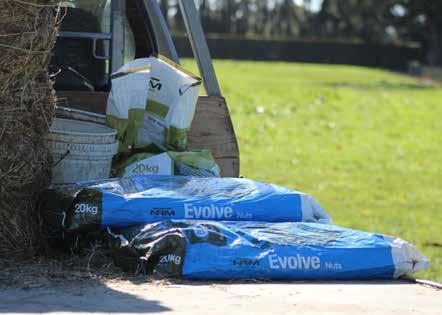
feed room. As well as highly fertilised pasture and baleage from the property, last winter all horses remained on a low feeding rate of 2kg Evolve and maintained condition beautifully. The added buffered mineral complex (BMCTM) from Kentucky Equine Research is also highly beneficial for ensuring optimum bone density in the young stock, and last year’s group of sales yearlings were also prepared mainly on an Evolve diet also.
Being extremely passionate about horses, breeding, correct management practices and developing younger staff in the industry made Anna a frontrunner for winning the NRM Stud Groom of the Year Award in 2020. This was only the second year this was awarded with the 2019 winner Rebecca Sargeant currently having significant success with a career in the racing industry in Australia.
Run in conjunction with NRM’s technical partners Kentucky Equine Research, the winner of the NRM Stud Groom of the Year receives an all-expenses paid trip to Australia to spend time with leading nutritionists at KER and accompany them to farms, bloodstock sales and training tracks throughout Victoria. With Covid impacting her original travel plans, Anna has recently returned from this trip two years after she won it.
Describing the trip as “information overload but in the best way”, Anna is still buzzing from the experience and said the team at KER were extremely accommodating. As well as attending the Thoroughbred yearling sales in Melbourne, which is a much larger scale than New Zealand yearling sales, Anna got the opportunity to discuss all aspects of stud management and exchange ideas with leading Thoroughbred and Standardbred managers throughout Victoria.
The Stud Groom of the Year Award also enables Anna to continue to develop and learn through maintaining the relationship with KER nutritionists and consistently receiving relevant information and research in future. Given Anna has goals of obtaining land and starting her own breeding operation, this relationship will be invaluable.
By focusing on nurturing and supporting young people, the Stud Groom of the Year award is a key to encouraging more careers in the stud industry. Anna recognises there is a lack of young people in the industry and an award such as Stud Groom of the Year is an amazing incentive to encourage passionate youths in their career paths, therefore sustaining the Standardbred and Thoroughbred industry and the calibre of people within it.
• El Niño Alert criteria continued to be met during July. Central equatorial Pacific sea surface temperatures (SSTs) exceeded El Niño thresholds but the Southern Oscillation Index (an atmospheric indicator) was neutral. Full ocean-atmosphere coupling for El Niño is expected in the next three months, likely persisting through summer.
• Atmospheric pressure is forecast to be above normal to the northwest of Aotearoa/New Zealand and below normal to the south, leading to more south-westerly quarter winds than normal across the country for the season as a whole. Wind speeds are forecast to be stronger than normal, particularly across the South Island and lower North Island.
• Rainfall is most likely to be below normal in the north of the North Island, near normal in the west of the North Island and east of the South Island, about equally likely to be near normal or below normal in the east of the North Island, and about equally likely to be near normal or above normal in the west and north of the South Island.
• During the second half of August, frequent westerly winds and low pressure systems are expected to result in occasional heavy rainfall for the South Island, particularly in the west, as well as the western North Island.

• Temperatures are about equally likely to be near average or above average in the northern North Island and most likely to be above average in all other regions.
• Westerly winds will bring warm air into the region from Australia at times.
• Coastal sea surface temperatures (SSTs) ranged from 0.3˚C to 1.8˚C above average during July. The warmer than average seas may reduce the intensity of episodic cold, southerly air masses that typically occur during late winter and spring.
• Soil moisture levels are most likely to be below normal in the north and east of the North Island, near normal in the South Island, and about equally likely to be near normal or below normal in the west of the North Island.
• River flows are most likely to be near normal in the west and east of the South Island and about equally likely to be near normal or below normal in all other regions.
For a more up-to-date and detailed forecast specific to your region, visit www.niwa.co.nz
Spring weather can be unpredictable. These apparel items will protect you in changing conditions.
Revolutionary worldfirst CushionCore comfort technology provides superior shock absorption at the heel. Also features super cushioning antibacterial and washable Comf2Bull air flow footbeds, a moulded polyurethane (PU) bullbar and a broad-fitting 200 joule impact-resistant steel toe cap.
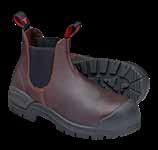
SKU: 1025143
Hooded Vest Mens

This 100 percent windproof jacket features a lined, contoured hood for added warmth and comfort in the cold, a Primaloft® Silver Down Blend, fleece-lined hand warmer pockets, a drop tail for added length and warmth and a large external chest pocket for secure gear storage.
SKU: 1054699

Made from 100 percent pure cotton, the breathable yarn helps prevent your body temperature from rising or falling from heat or wind, and draws moisture away from the skin, leaving you comfortable and dry. Also includes safety button fronts and easy-movement shoulder pleats.
SKU: 1024812
Spring is shaping up to be warm and windy but rainfall is likely to ease off in some areas, according to NIWA’s long-range forecast.







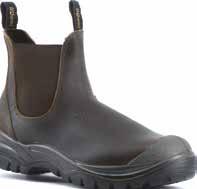





To bring out her best, CYDECTIN® Pour–On provides flexibility when drenching. With nil withholding periods for milk, meat and bobby calves, you can treat your cows if and when they need it.

CYDECTIN Pour–On is long lasting, with 35 days protection against Ostertagia ostertagi. It kills biting and sucking lice too. So keep your profits up and parasites down. Invest in CYDECTIN Pour–On
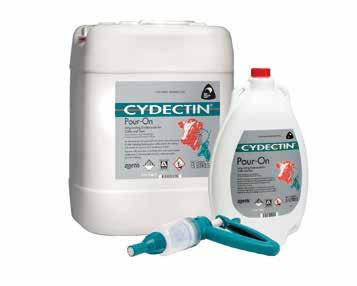


— New Zealand made for healthy Kiwi cows.
Available from Farmlands stores nationwide.
Who apart from meteorologists knew what atmospheric rivers were just a couple of years ago? Record-breaking rainfall has undoubtedly increased the number of sad-looking livestock that have most likely slipped both in terms of weight and body condition compared to normal for their stage of life. Fully-fed ruminants are normally pretty robust in the face of cold weather, because of the heat generated in a well-fed rumen. However, even acclimatised cattle need to burn calories to keep warm when it is cold, windy and wet. Diet programmes don’t normally have a correction for inclement weather, but the energy cost associated with trying to keep warm can be significant. The Lower Critical Temperature at which livestock burn energy to keep warm increases markedly when they are wet e.g. Penn State Extension in the USA recommend that wet beef cows at 9°C require 20 percent more feed than dry cows at 15°C – depending on the breed and coat condition.
Our climate historically has not favoured the proliferation of breeds like Welsh Mountain and Scottish Blackface sheep that have been naturally selected for fleeces that shed heavy rainfall. Red deer that evolved in temperate woodland and alpacas from the cold but very dry Andes are not best prepared for cold rain. Wool coats are practical for young lambs and horses can be rugged, but for most stock some natural shelter and extra feed can be as much as is practical to provide.
DR ROB DERRICK HEAD OF PRODUCT DEVELOPMENT
The wet autumn has been associated with better-thanaverage pasture growth, but after long periods of reduced sunlight the grass could be low in both dry matter and energy. Winter crops and supplementary forage utilisation will decrease as soils become waterlogged. While it seems counter-intuitive to feed out hay or baleage when pastures have good cover, dry, easy-to-consume feed can help dry matter intake. Stock will expend more time and energy to consume the same amount of dry matter and even more effort if they want comparable energy intakes to a typical season. Immunity can be suppressed in alreadycompromised animals not only because energy is limited, but because of a lack of essential trace minerals and vitamins from stressed forages.
The seasons might balance out but if not, supplementary feeding can be a cost-effective solution to lift condition before critical dates such as lambing, calving or mating in the case of yearlings. With added trace minerals and vitamins, compound feeds can help lift the health of stock beyond delivering just energy and protein in a concentrated, low-wastage form.
For those looking to benefit from premiums from key markets by avoiding GM feeds, Farmlands offers a range of products for alpacas, calves, deer, and goats formulated from non-GM grains and by-products. A month or so of feeding can help turn stock around more reliably than an improvement in the weather.
A wet cow is a hungry cow. Here is a quick guide to how to adjust your herd’s feeding programme to the weather.
Maria is the first ever national General Manager for the Rural Support Trust, a collective of 14 regional trusts offering free, confidential support to those in rural communities. “One of our key messages at the moment is that it has been a tough year, so pick up the phone, talk to someone, give us a call,” she says. “Don’t wait until it’s really dire; talk to someone early so we can get some support and wraparound early. We don’t want to be the ambulance at the bottom of the cliff.”
Although she only started the role in May, Maria is familiar with the workings of the trust, having been involved with it in her previous job. “Originally, I was an agri-banker, and then I’ve been working with Beef+Lamb for the last five-anda-half years in an ‘industry good’ role, as an extension manager in the midnorthern North Island region. For me the next step was to apply for this role. My parents were farmers, just south of Gisborne, so that was why I’ve always had a desire to work with farmers or within the rural sector somehow.”
Maria says the work of the trust is constantly evolving to meet the

ever-changing challenges faced by farmers and growers. She says changes in the policy space have been affecting the rural sector recently, while there are always “business-as-usual” stressors such as employment issues and poor mental health. “At the moment there’s financial pressure with increasing input costs and interest rates as well, and there’s always relationships, working through succession and working with family on farms.”
The triggers for calling the trust can vary by region, not just because of one-offs such as cyclones but due to a host of other economic and social factors, Maria says. “In some areas you might not have as many employment issues, but more around finances, or succession. They’re often inter-related, so in some ways you’re picking the one they made the most of when they phoned up, but there could be a lot of underlying stuff underneath that.”
When someone contacts the local Rural Support Trust, the person answering will assess the urgency of the call and assign a facilitator. Maria says it is important to get the
If you would like to contact the Rural Support Trust, call 0800 787 254 or find your local trust at www.rural-support.org.nz/regions
right facilitator in. “The facilitator stays with them, although they might bring in people with other areas of expertise to help out with the issue. That facilitator connection is really important to make sure they’ve got that ongoing support.”
A big part of Maria’s role will be around communications including internal, media and sponsors/donors. Having her on board will take some of the workload off the trust’s national council, who like many of the staff are volunteers. “The trust is immensely lucky because we don’t have to look for helpers as such, they come out of the woodwork,” Maria says. “We find as our profile increases, people are coming to us saying ‘we want to help out’. One of the great things about rural communities is they genuinely want to help.”
•
•
Recent wild weather has put severe pressure on farmers and growers, but ongoing issues like regulation and financial troubles are also among the leading stressors, according to new Rural Support Trust General Manager Maria Shanks.
When it comes to insurance for Lifestylers, we’ve been around the block – for over 117 years in fact. We know that living rural is a completely different way of life – you’ll come up against situations you’d never experience in the city.
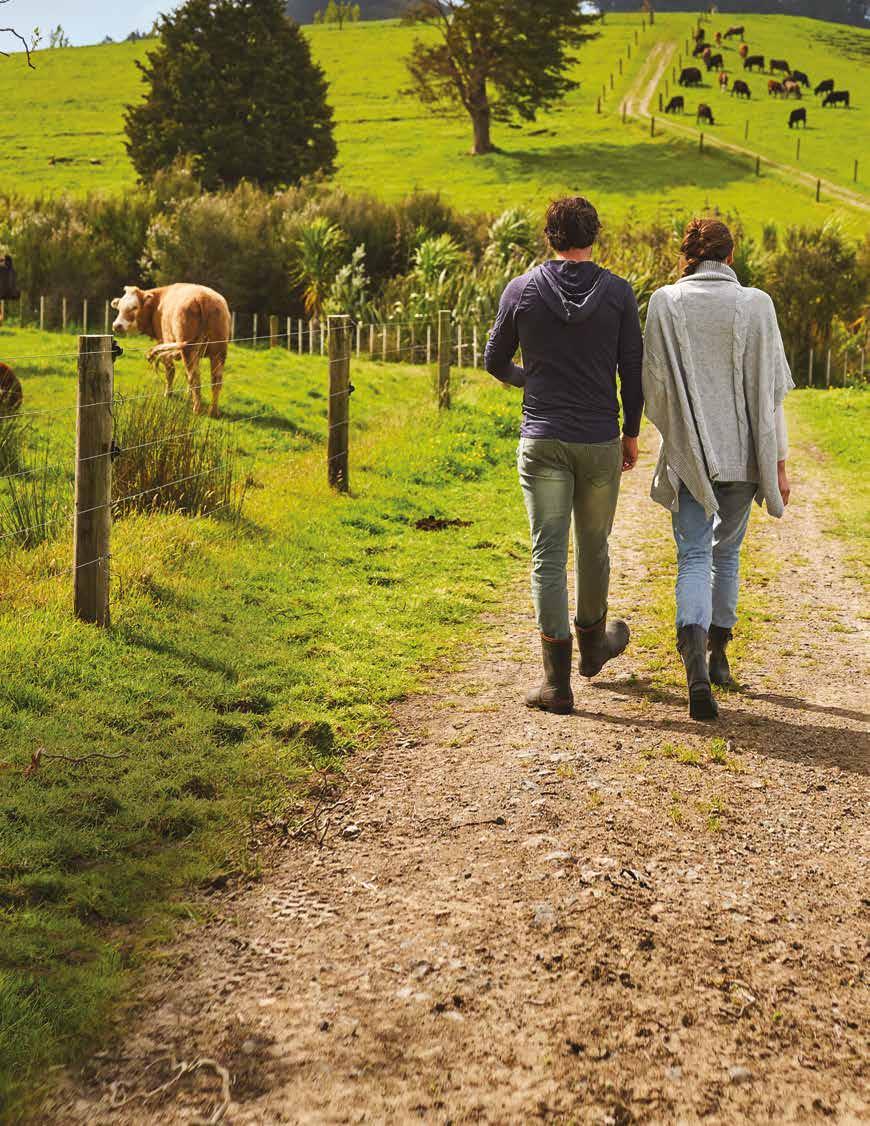
We provide benefits specifically for lifestyle blocks as well as award-winning car, home and contents cover. Our specialist lifestyle team understand the unique aspects of living on a lifestyle block and can provide you with the peace of mind that your slice of paradise is properly covered.
So, for advice specific to your block, give FMG a call on 0800 366 466 or visit fmg.co.nz.
We’re here for the good of the country.
that’s not productive for farmers to do”. Further, he explained that succession was at risk. The problem is that people won’t invest in their farms if they don’t see that they will be able to cover costs. If the farm owners don’t feel positive, there will be implications for the whole of the sector in terms of recruitment and succession.
Beyond stating the importance of the sector to exports, restoring confidence requires overt statements of value – of the people who create what the world needs and wants.
Changes are ahead. They always are. New Zealand farmers are up to the challenge. They always have been. Resilience, that highly overused word, is in their DNA. And yes, the need for resilience has been extraordinary over the last year. What is needed now is hope.
Farmers are providers of food and caretakers of the environment. This dual role is creating conflict and governments are imposing regulations without understanding the consequences.
In Ireland a government document explaining the plan to reduce agricultural emissions by 25 percent by 2030 has been interpreted to suggest reducing the dairy herd by 65,000 cows a year for the next three years.
Farmers are not happy. Former president of Macra (the Irish Young Farmer organisation) Thomas Duffy has stated that the scheme is a waste of money and bad policy because “You’re putting money into something
Twenty thousand kilometres away and New Zealand can already see the effect of statements such as ‘Sunset Industry’ last century, and 20 years of hard slog. Covid reminded New Zealanders about the importance of agriculture to the economy, but the weight of increasing government regulations and ongoing uncertainties has been wearing farmers down.
Productivity is in negative territory. Farmers in the UK are feeling equally concerned, as they are in the Netherlands and Canada. Some of the changes suggested make no sense in a world of growing populations and increasing food demand. It is this demand that appears to be the foundation of many Irish farmers feeling upbeat. They see a major opportunity as producers of low carbon impact milk.
New Zealand farmers are in a better position. Whether dairy or drystock, New Zealand has the low-carbon record. What is needed, however, is overt government support.
The government has a role in modelling how people in society feel towards farming and farmers. The performing arts were taken seriously as a career option when Helen Clark, then Prime Minister, invested in them. Support of female sport has also had positive outcomes.

But arts and sport, important as they are, are not the same as food and the export economy, which allows the government to make investments in arts and sport.
Farmers need hope not only that their activities are regarded positively, but also that the businesses that they have worked hard to develop will be valued appropriately. The government can send the signals of appreciation to society. Whatever party and whatever the makeup of the government, giving hope that farming will continue productively is the key to a positive future.
Any regulations imposed should enable not constrain, and the goal should always be sustainable food production. The winds of change need to be strong and October is the time for them to appear.
With the election approaching, leading academic Dr Jacqueline Rowarth shares her thoughts on what the next government needs to do to support New Zealand farmers.Dr Jaqueline Rowarth. Dr Jacqueline Rowarth, Adjunct Professor Lincoln University, is a member of the Scientific Council of the World Farmers’ Organisation and on the Board of Directors of DairyNZ, Deer Industry, NZ Animal Evaluation Ltd, and Ravensdown. The thoughts and analysis presented here are her own. You can contact her at jsrowarth@gmail.com

